Nancy describes her shampooing experience this morning as like washing a scrub brush because her hair was so stiff with yesterday’s dust. When it came time to choose a vehicle to ride in today, she looked for one that still had at least some of its window glass in place, and made sure to get a seat upwind.

Today’s sunrise
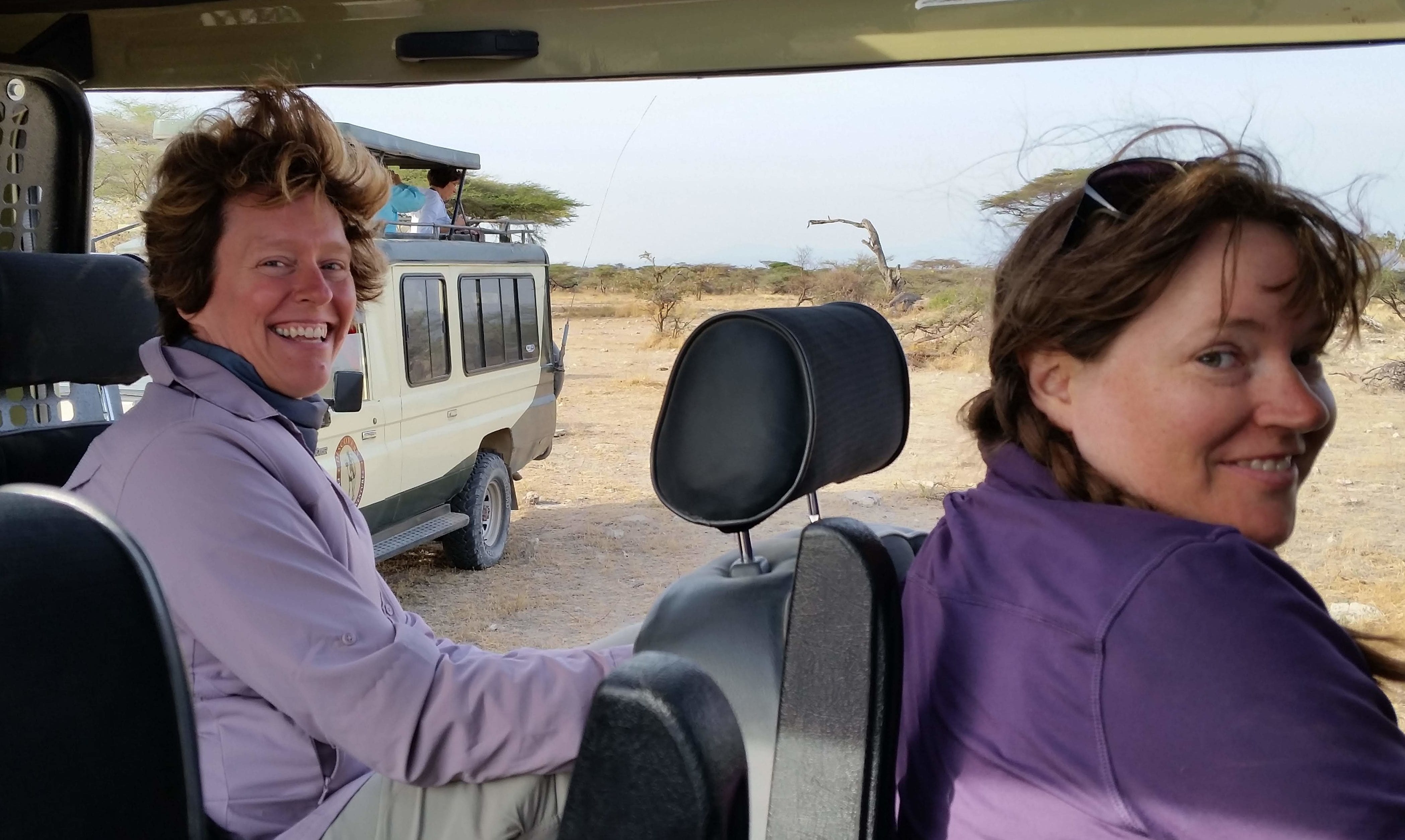
Nicki and Kara
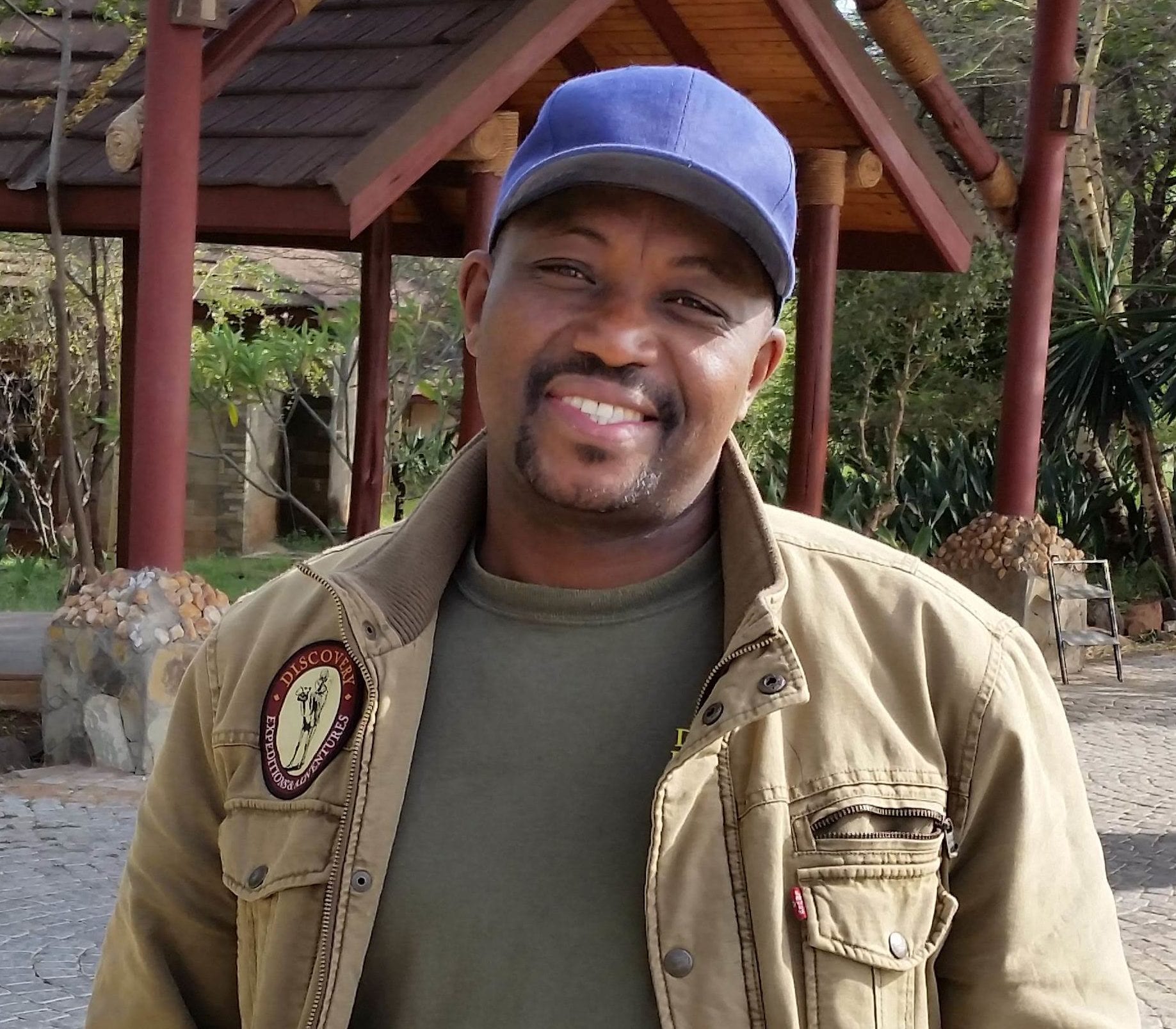
Edwin
Sisters Nicki and Kara (Dyrk VanV’s cousins, and the youngest members of our tour group) sat in the back and didn’t seem to mind a little dust blowing in their faces. Jim rode shotgun beside Edwin, as he always does. After working together for fifteen years, Jim and Edwin are nearly inseparable. Their friendship is palpable, as is their mutual love for this land and its inhabitants it–human and otherwise.
Some of the scenery along the dirt trails in the reserve–especially the ones closest to the lodge–had begun to look familiar to us, but this morning Edwin drove us through an area along the river that we did not recognize at all. It was much greener and more wooded than anyplace we had yet seen in Samburu. Giraffes and elephants browsed among the trees, and all seemed peaceful.
All of a sudden, Edwin made an abrupt turn and began speeding away from the river. He offered no explanation, but we assumed that he had heard something over the radio worthy of an immediate response. When Michael asked where we were headed, Edwin would say only: “It’s a surprise.”
Now, although we had observed hundreds of animals in the Samburu Reserve, our group was a bit disappointed that we had not seen a lion.
“Consider yourselves lucky that you saw a leopard and a family of cheetahs,” our guides reminded us. “Many visitors never get to see any big cats at all.”
Nevertheless, we were eager to see a lion, and we were aware that this morning’s game drive would be our last opportunity before leaving Samburu. We hoped that Edwin’s surprise would involve a lion, even though we had not overheard the word simba in the radio chatter. (But of course, simba is a Swahili word, and our drivers were conversing in Kikuyu.)
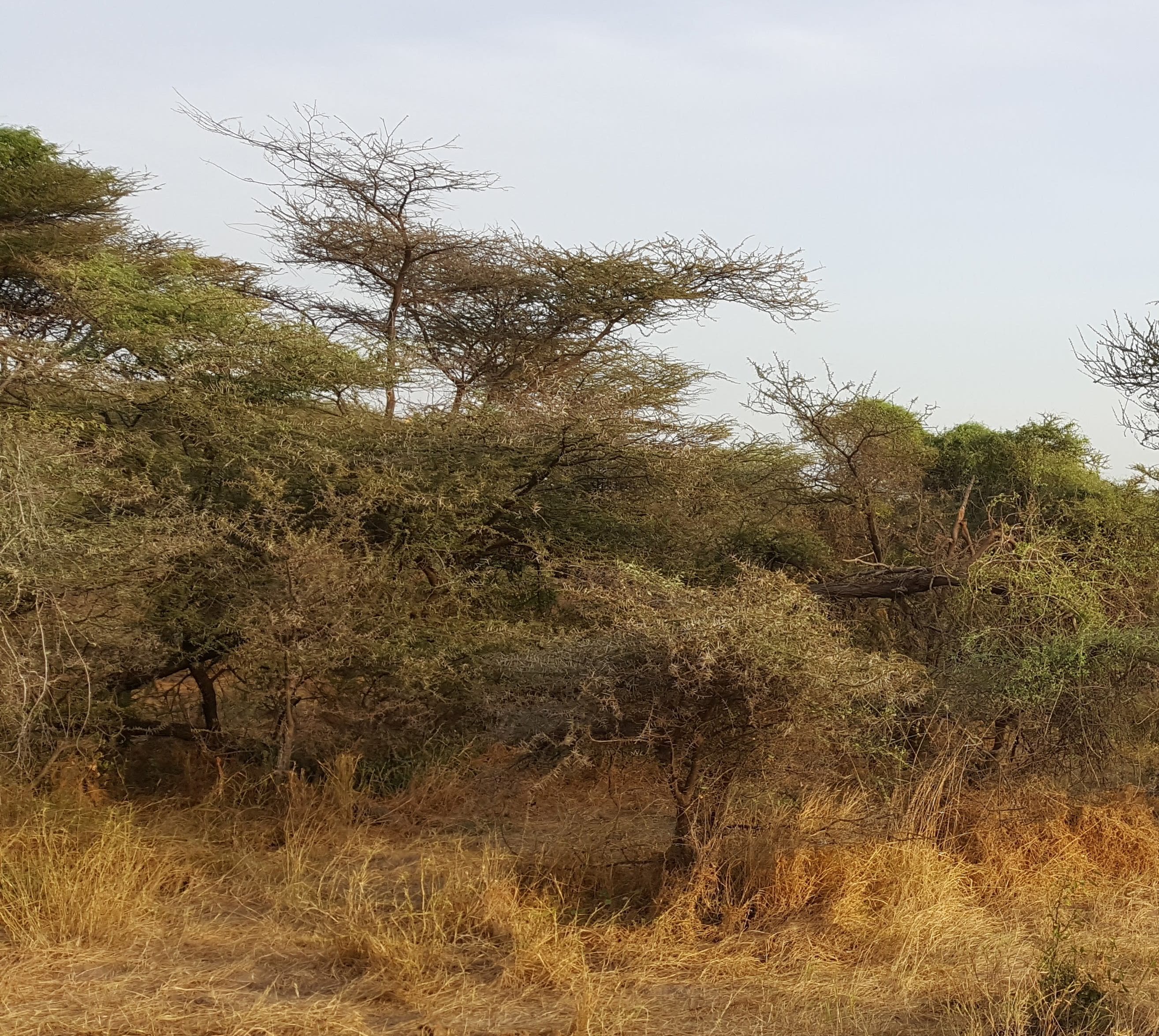
Two lions disappeared into this thicket
“There they are,” said Jim, pointing as we approached a thicket. Another Land Cruiser was already parked nearby, its occupants’ cameras and binoculars trained on two male lions moving past them into the shrubbery. As they disappeared from our view, Edwin did not hesitate to take our vehicle completely off-road into the thicket itself, driving the cats back into the open.

This lion was unafraid to approach our vehicle
To our surprise, neither ran. One flopped down in the low grass in front of us, while the other walked right up to our vehicle and sniffed at Nicki through the window opening. Had she put her hand out, she could have patted its head–but she didn’t need Edwin’s reminder to keep her hands inside. Within ten minutes, more than a dozen other vehicles had formed a circle around the lions, who remained in the clearing and acted as if they were holding court.

This lion wears collar with a tracking device
One of the animals was collared with some sort of tracking device, which is not uncommon in a reserve where rangers study the movements and habits of their charges. Both lions appeared well fed, so although they kept their eyes on a herd of impalas grazing close by, they made only one half-hearted attempt to go after them. This occurred when two male impalas started sparring at the edge of the clearing. The cats instinctively responded because, as Jim explained, a fight creates an ideal opportunity for predators to take advantage of their prey’s distraction, but this morning the lions apparently thought it wasn’t worth the effort to attack.
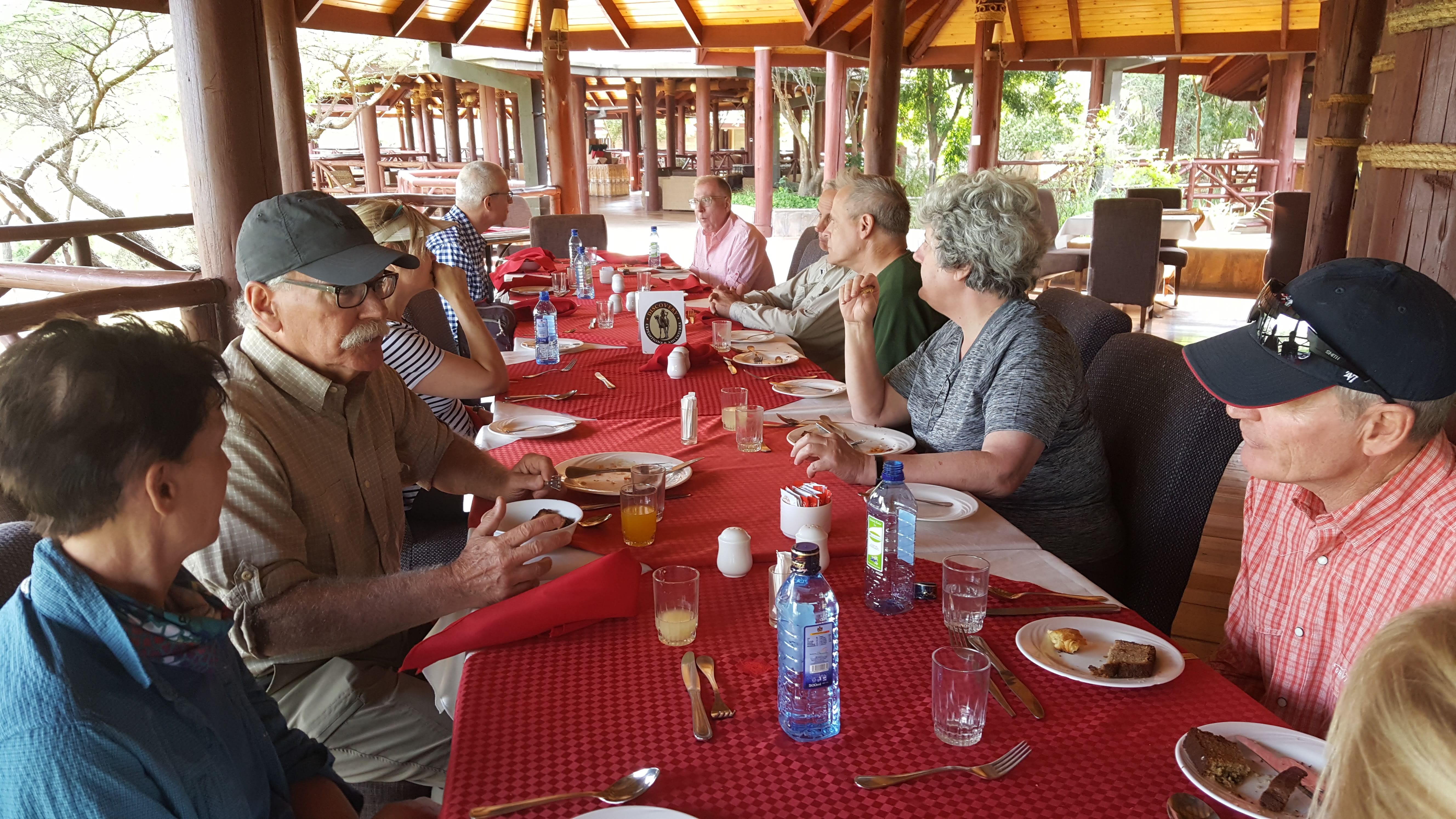
Final meal in Samburu
Finally as content as the lions seemed to be, we could call it a morning and head back to the lodge for our last breakfast at the Samburu Simba Lodge. We brushed our teeth and made sure we hadn’t left anything behind, then rolled our suitcases out to the loading area and joined Mark and Lynn, who now occupied the back of Edwin’s Land Cruiser (in which the windows had been replaced). Jim got up front again as expected, and we were on our way by 10:20 am.

Passing through the gates of Samburu National Reserve

Plastic jugs and containers were one of the many items for sale along the side of the road
We retraced the route south through the town of Isiola (more bustling with weekday commerce than it had been on Sunday) and on to Nanyuki, passing hillsides covered with sunflowers that somehow had escaped our notice previously. Huge blue harvesters crept slowly through acres and acres of wheat fields on either side of the highway.
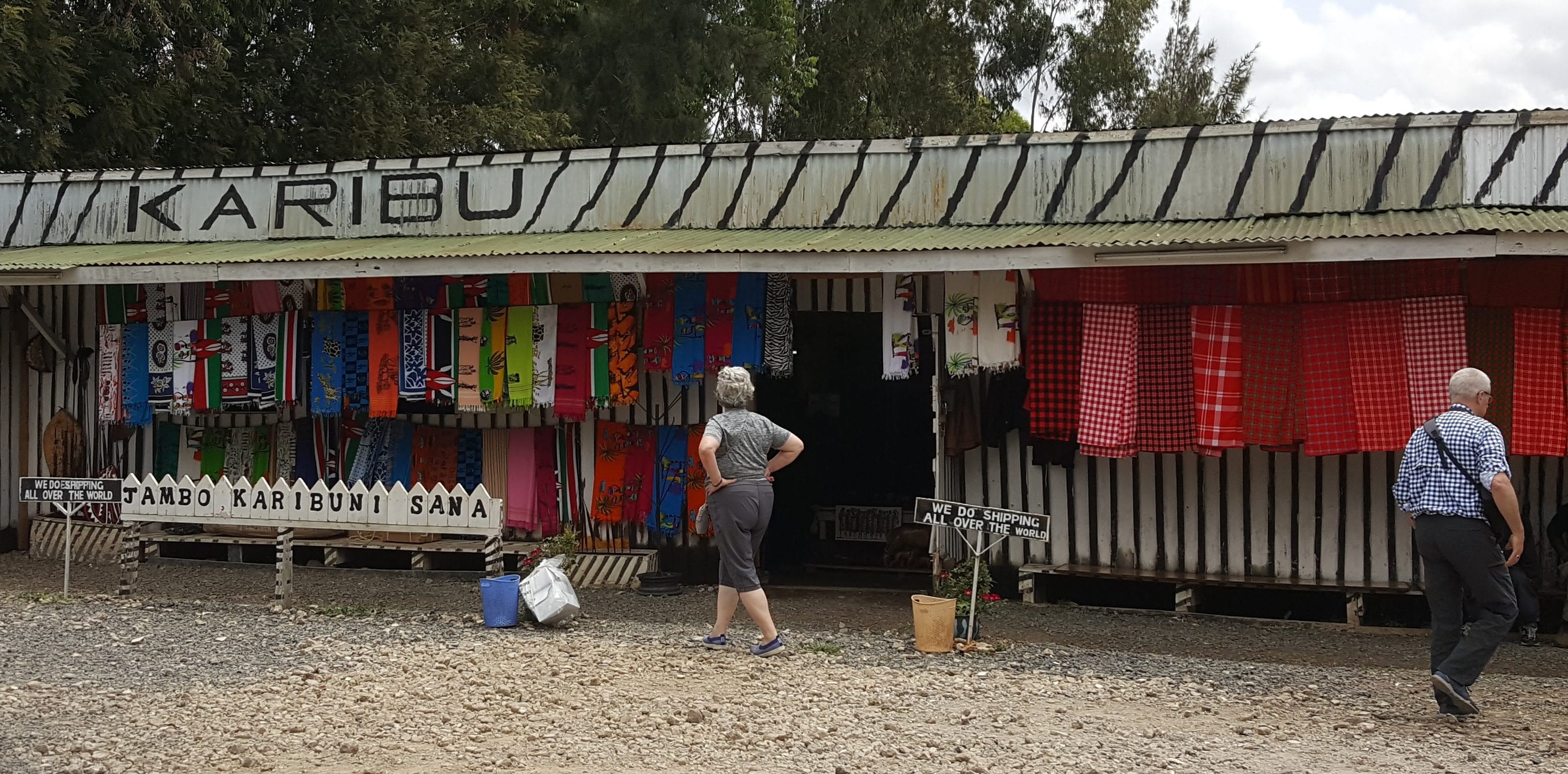
Taking a break at the Karibu store
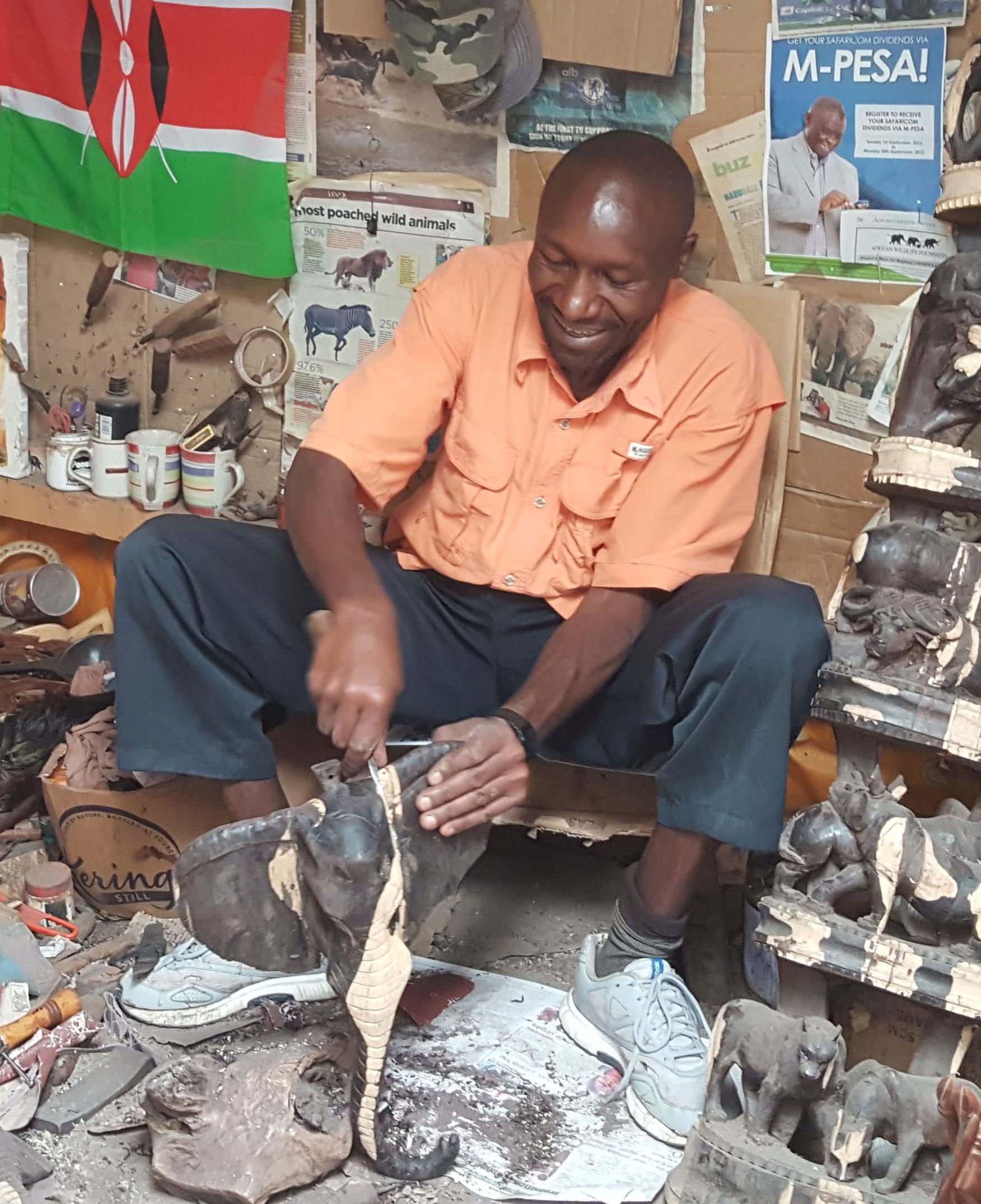
A woodcarver creates details in ebony
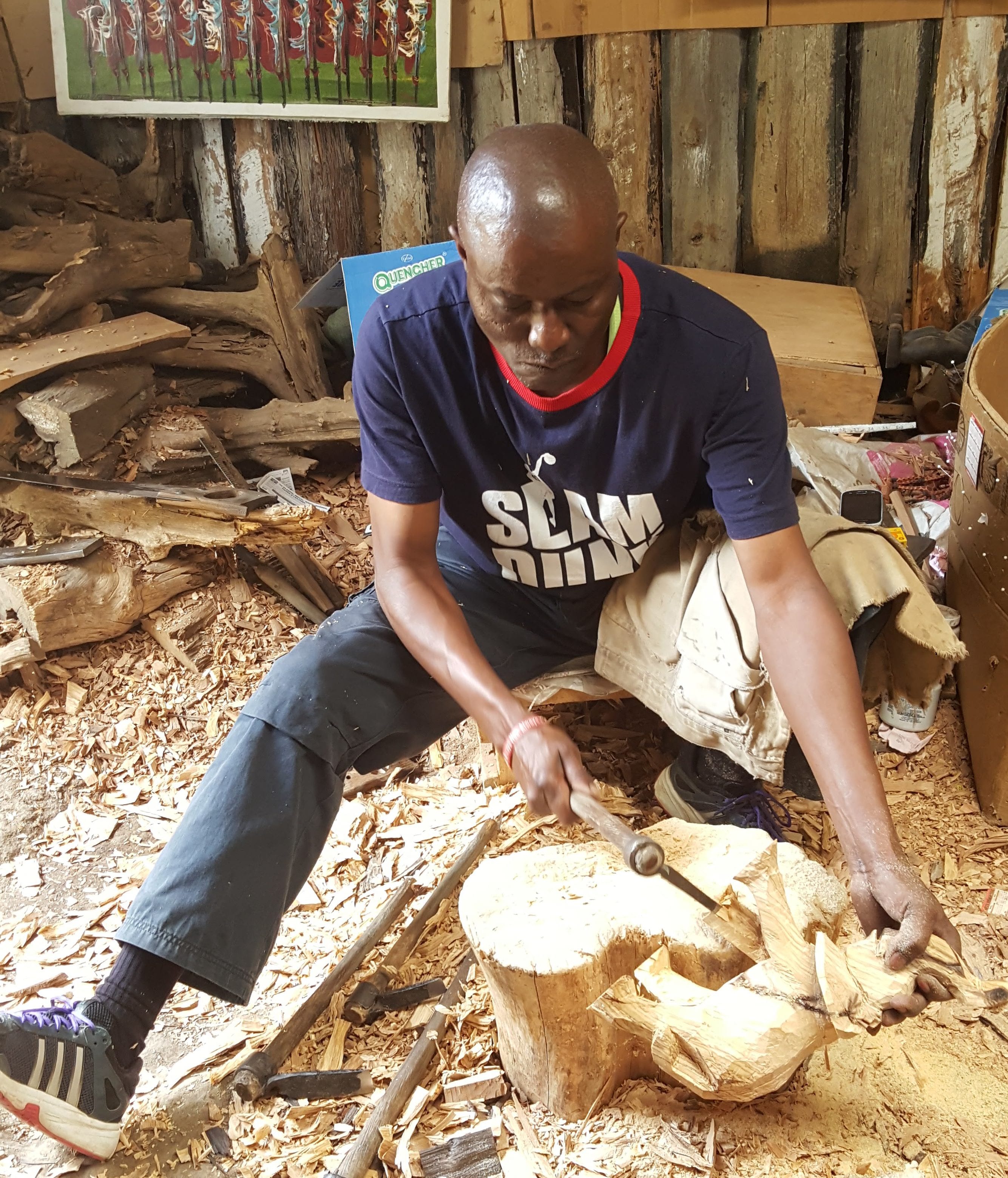
Another carver begins fashioning an elephant
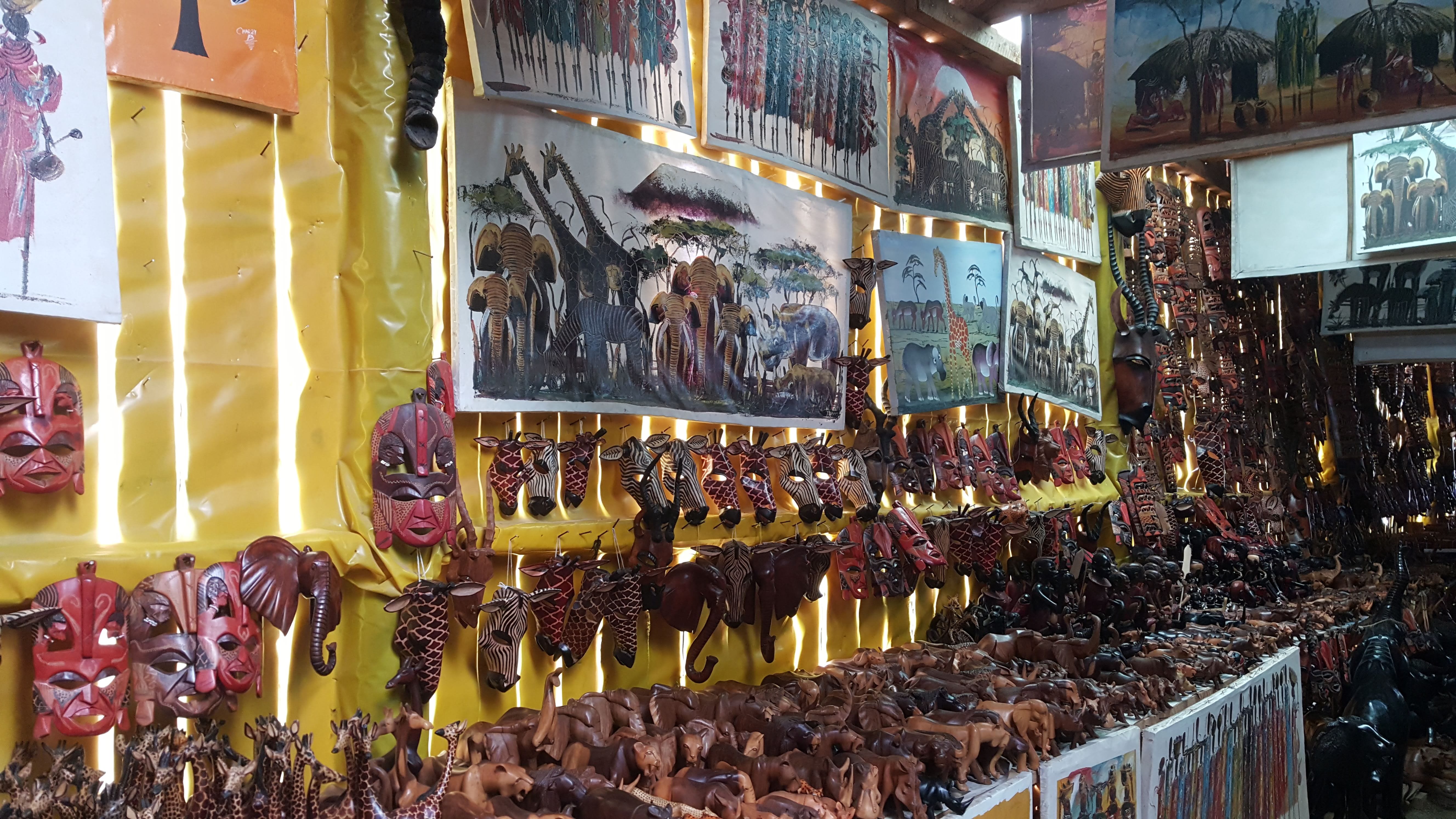
A vast array of merchandise in the Karibu store

Banana-leaf wildebeests
Although this morning’s trip took only a couple of hours, we stopped about thirty minutes short of our destination to use the bathrooms, watch some artisans at work, and shop for souvenirs at a store called Karibu (“you’re welcome” in Kiswahili), which was similar to the place we had been to on Sunday. Here Nancy and Michael paid a little more attention to the merchandise and found a “mosaic” made of banana leaves to add to our collection of two-dimensional artwork representing each of the countries we have visited. This time we felt no compunction to moderate our bargaining and brought the cost down to less than half the original asking price. The piece depicts two wildebeests. We haven’t seen any of these animals yet, but we anticipate seeing thousands of them later in the week. Indeed, we scheduled this trip so that we could witness the annual wildebeest migration north from the Serengeti to the Maasai Mara region.
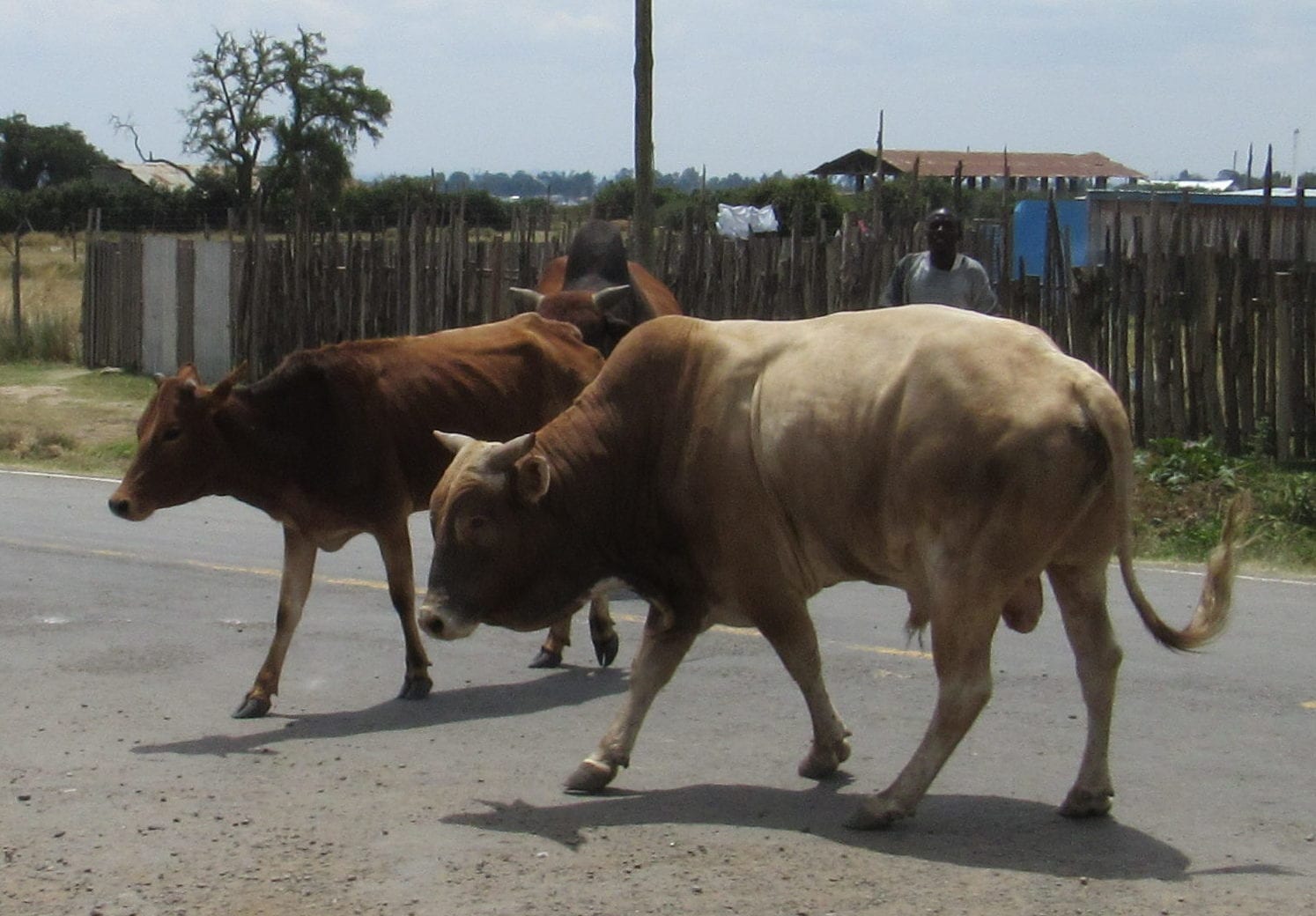
A small contingent of Brahman cattle crossing the road momentarily blocked our way
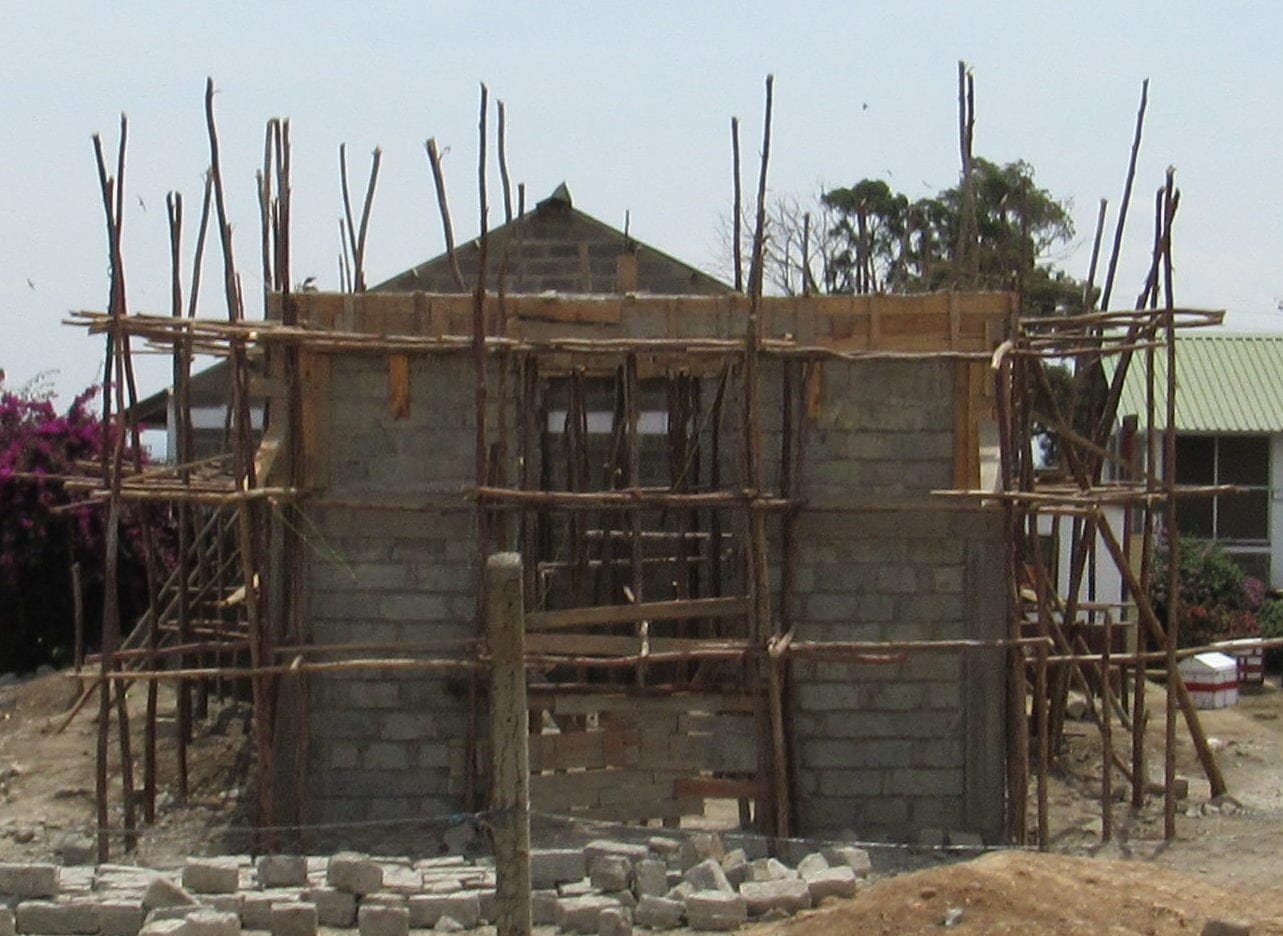
Construction scaffolding is made from rough branches lashed together
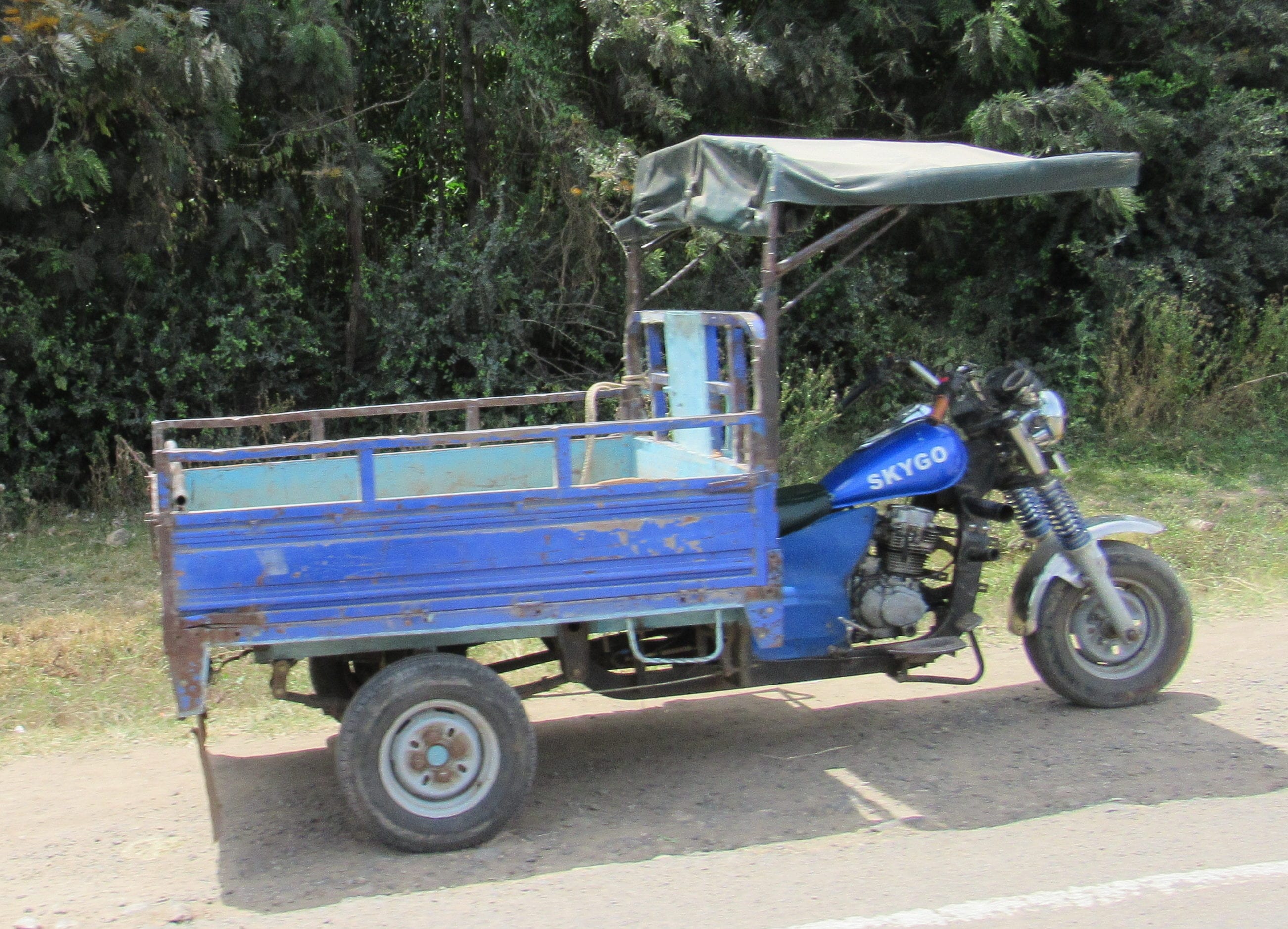
This type of delivery vehicle was extremely rare
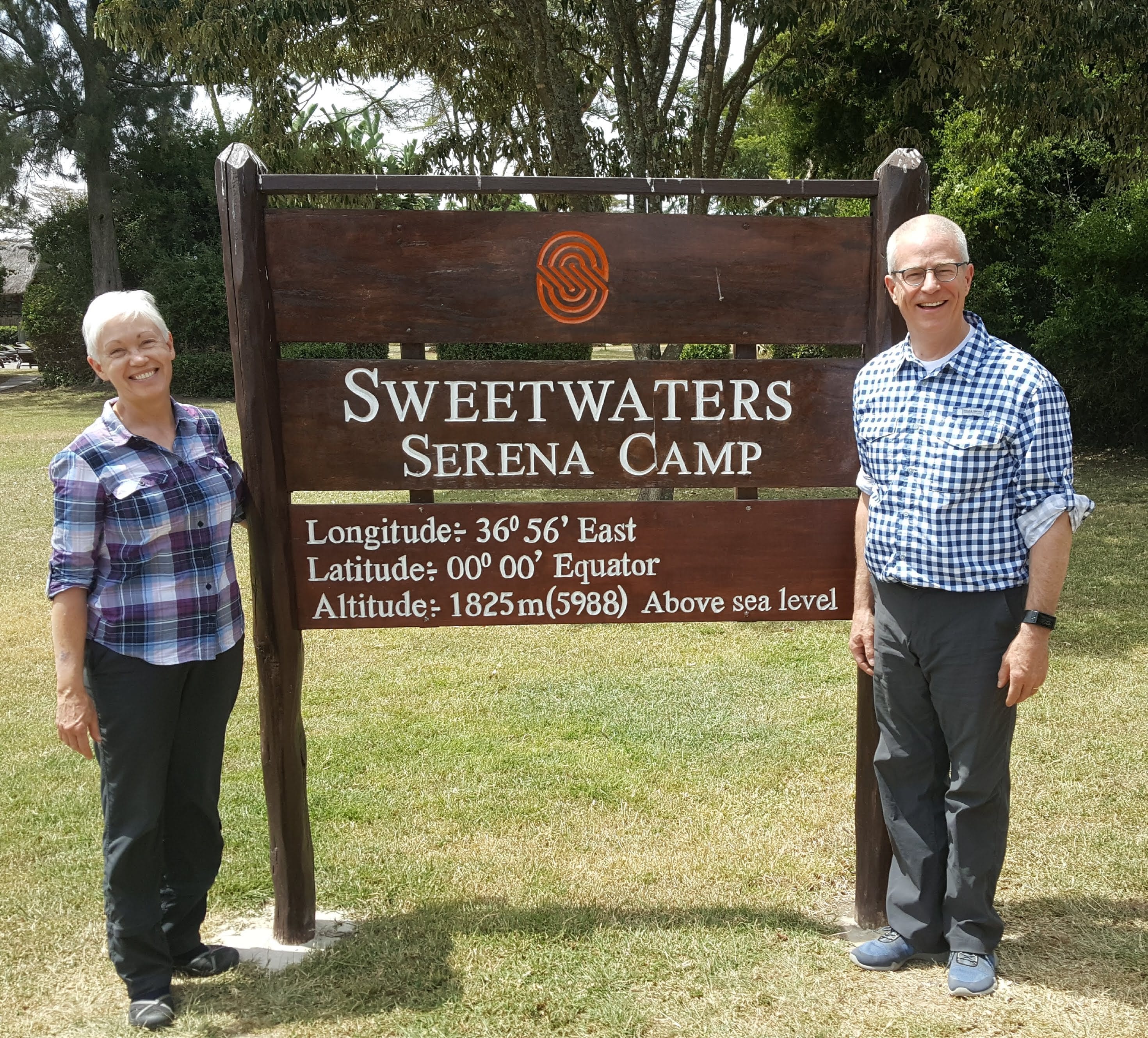 Turning off the highway outside Nanyuki, we headed west on a dirt road to the Sweetwaters Serena Tented Camp, situated right on the equator within the 90,000-acre Ol Pejeta Conservancy. “Tented Camp” makes the place sound much more rustic that it is, and what we’re doing here definitely fits the description of “glamping.”
Turning off the highway outside Nanyuki, we headed west on a dirt road to the Sweetwaters Serena Tented Camp, situated right on the equator within the 90,000-acre Ol Pejeta Conservancy. “Tented Camp” makes the place sound much more rustic that it is, and what we’re doing here definitely fits the description of “glamping.”
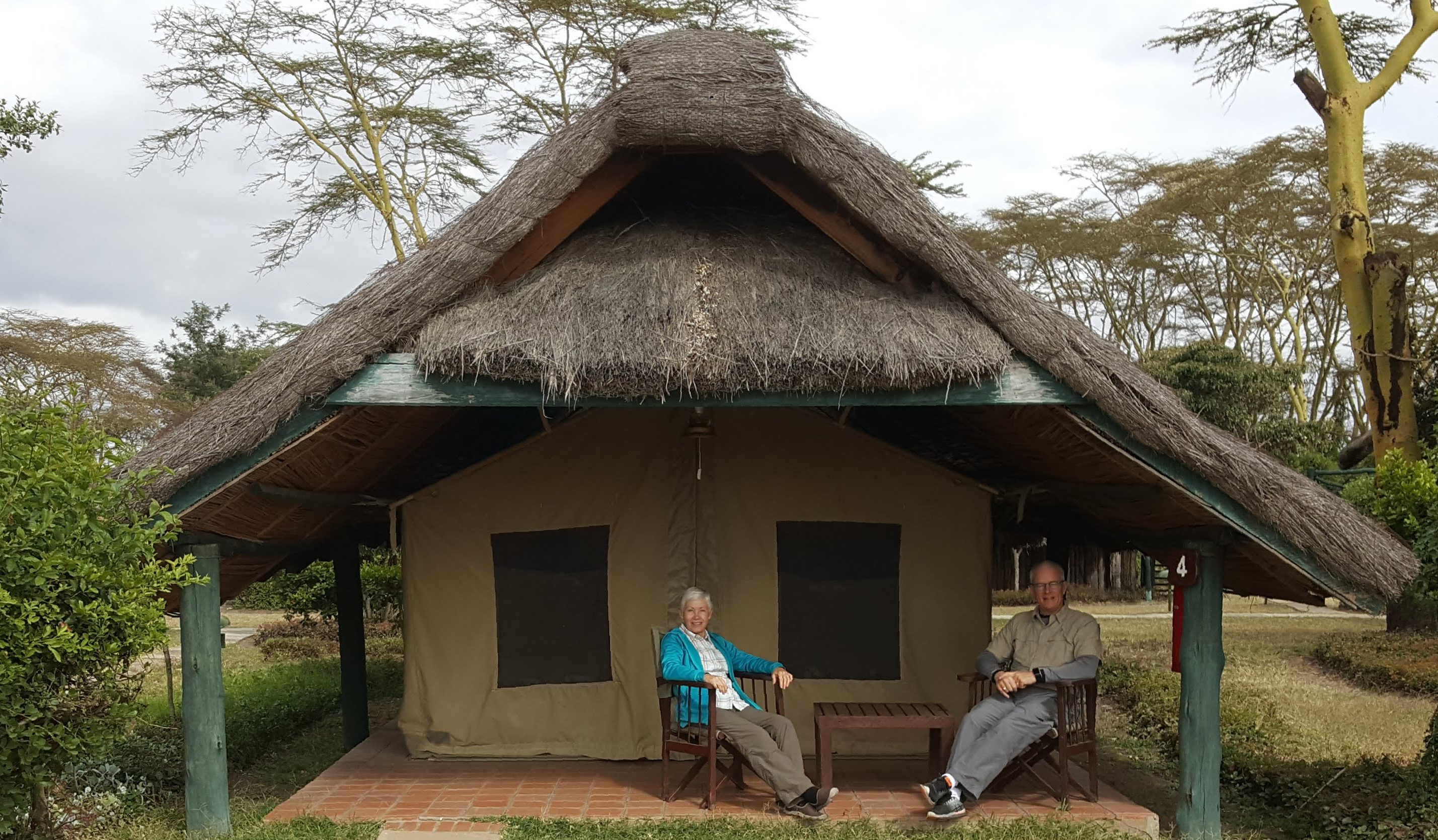
Our “rustic” tent bungalow . . .
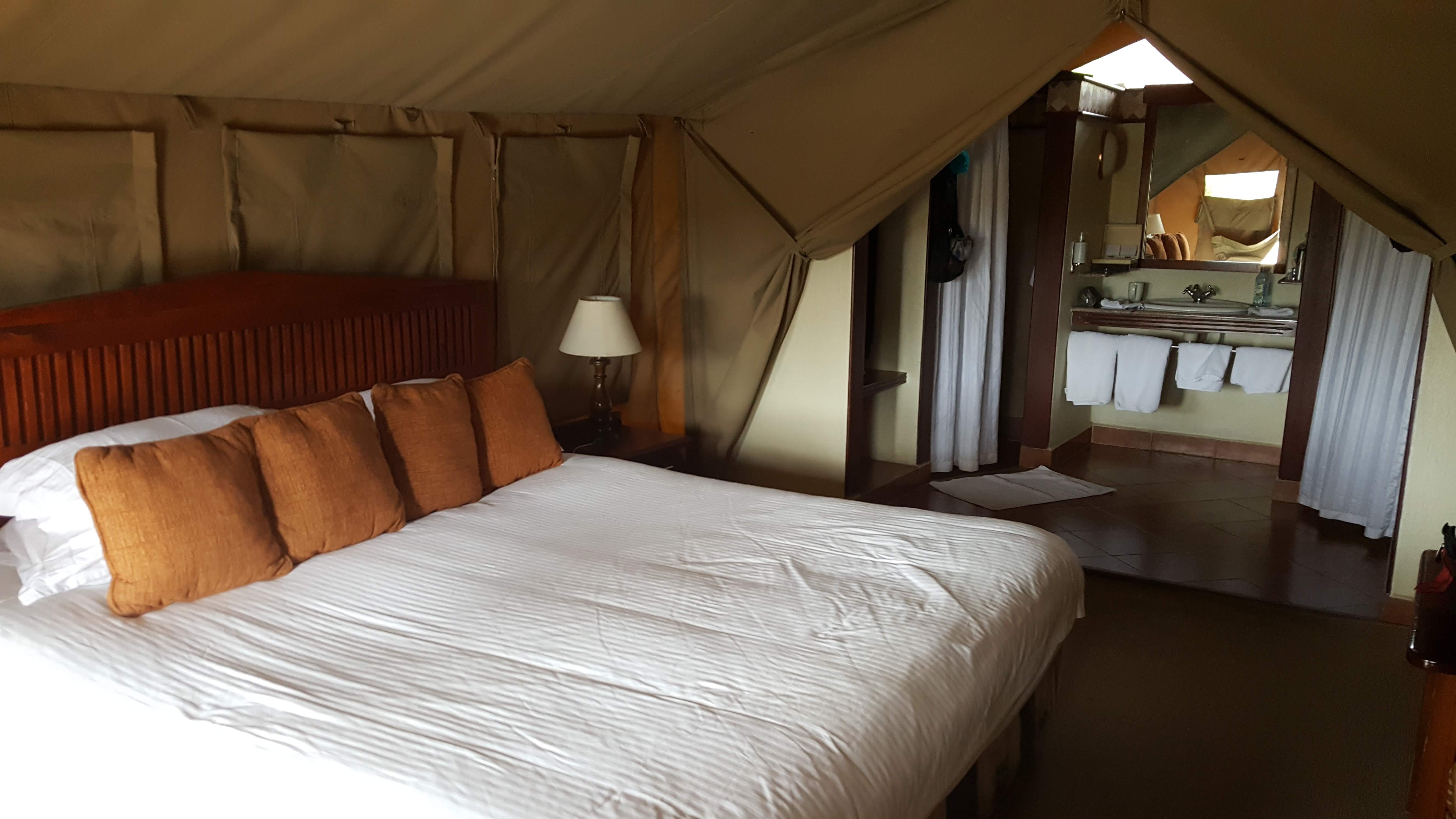
. . .complete with shower and king-size bed
Each canvas tent sits on a tiled-concrete pad under a thatched wooden roof. Inside there’s a king-size bed, a granite sink with hot and cold running water, a spacious shower with fluffy towels, a flush toilet, electric lights, and even decent wifi. Everything is very clean. From the easy chairs on our wide front porch, we can enjoy an unobstructed view of the waterhole.
A clear view of the waterhole is also the main attraction at the lodge, where we gathered for lunch as soon as we arrived. Today the pond was alive with storks, cranes, egrets, cape buffalo, warthogs, giraffes and–count our lucky stars!–a few black rhinos.
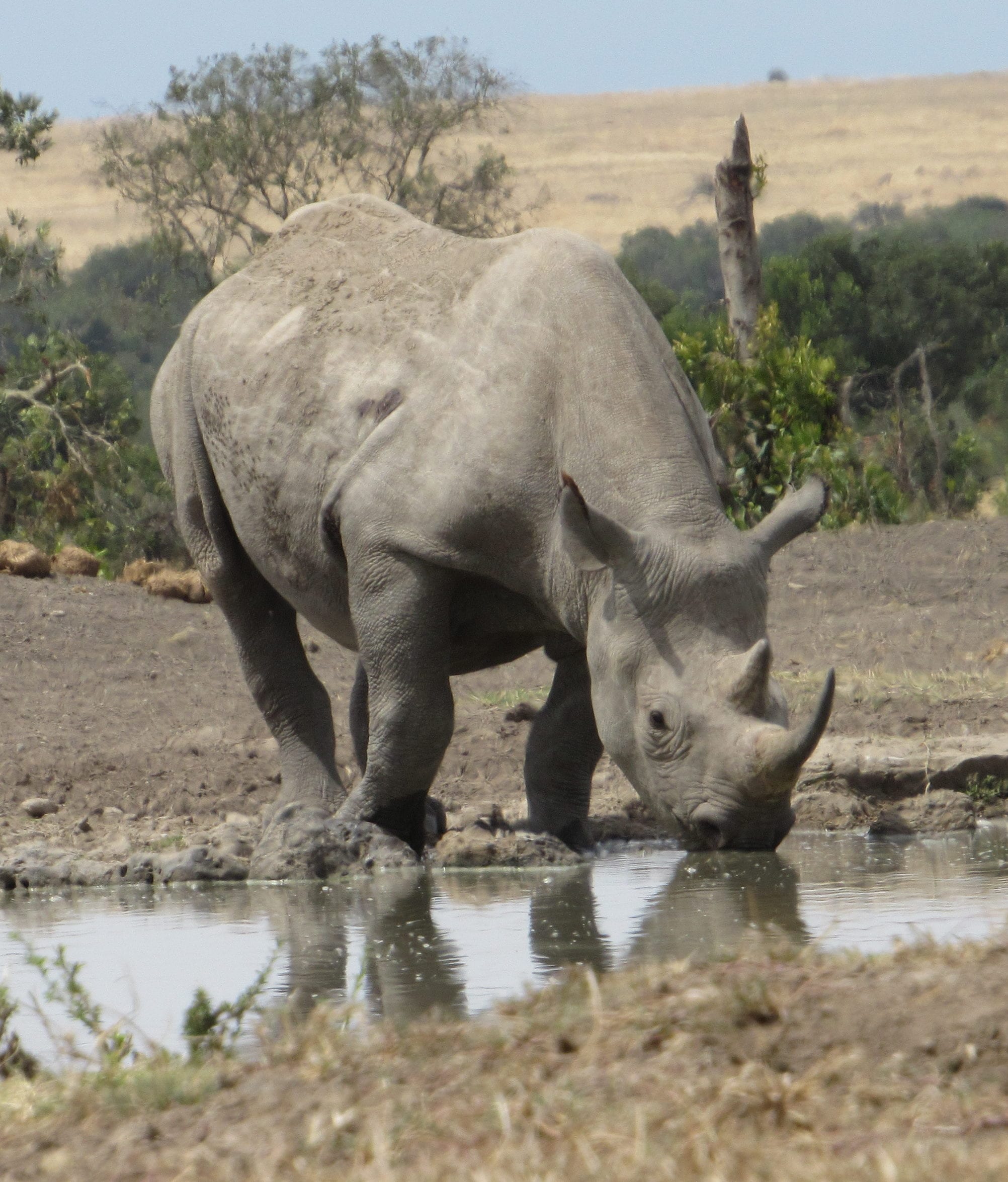
Black rhino at the watering hole
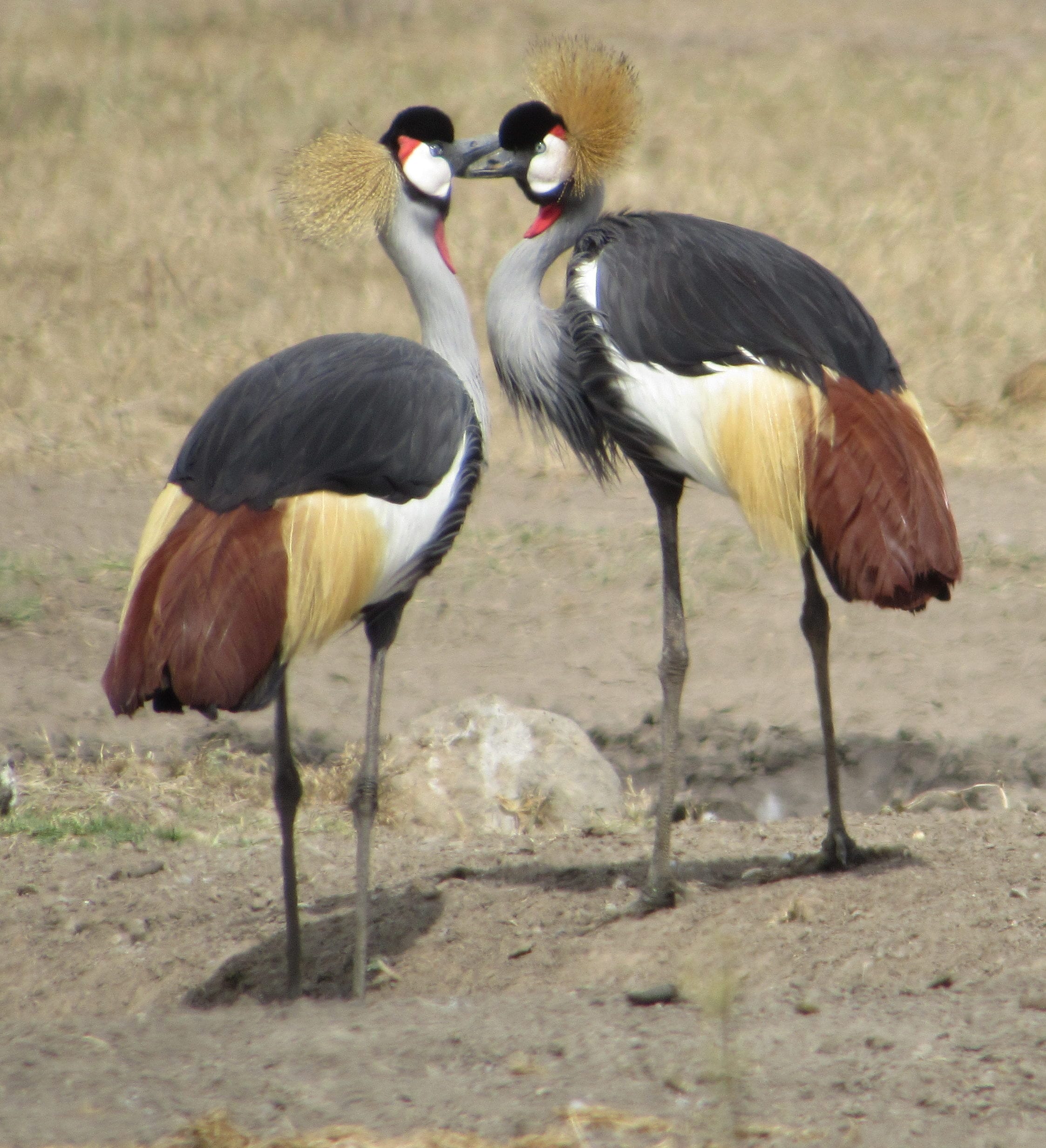
Gray crowned cranes
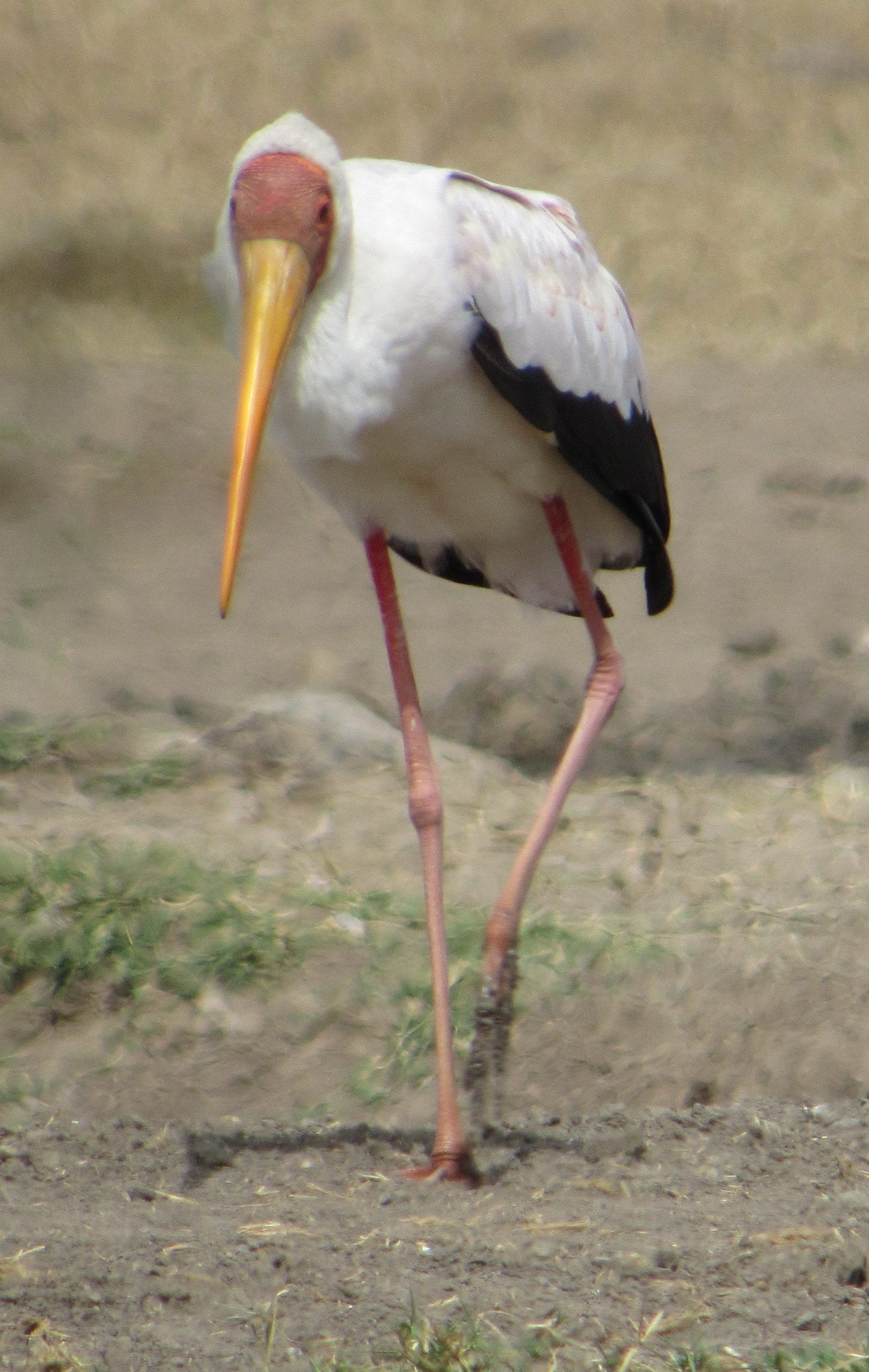
Yellow-billed stork
We were so thrilled and eager to take photos of those rare beasts that we almost ignored the excellent buffet, which included a lot of Indian dishes and tender pieces of braised beef in a tasty brown sauce.
Nancy decided that since we are staying here for a couple of nights and the weather is supposed to remain dry, this afternoon would be an auspicious time to do some hand laundry.
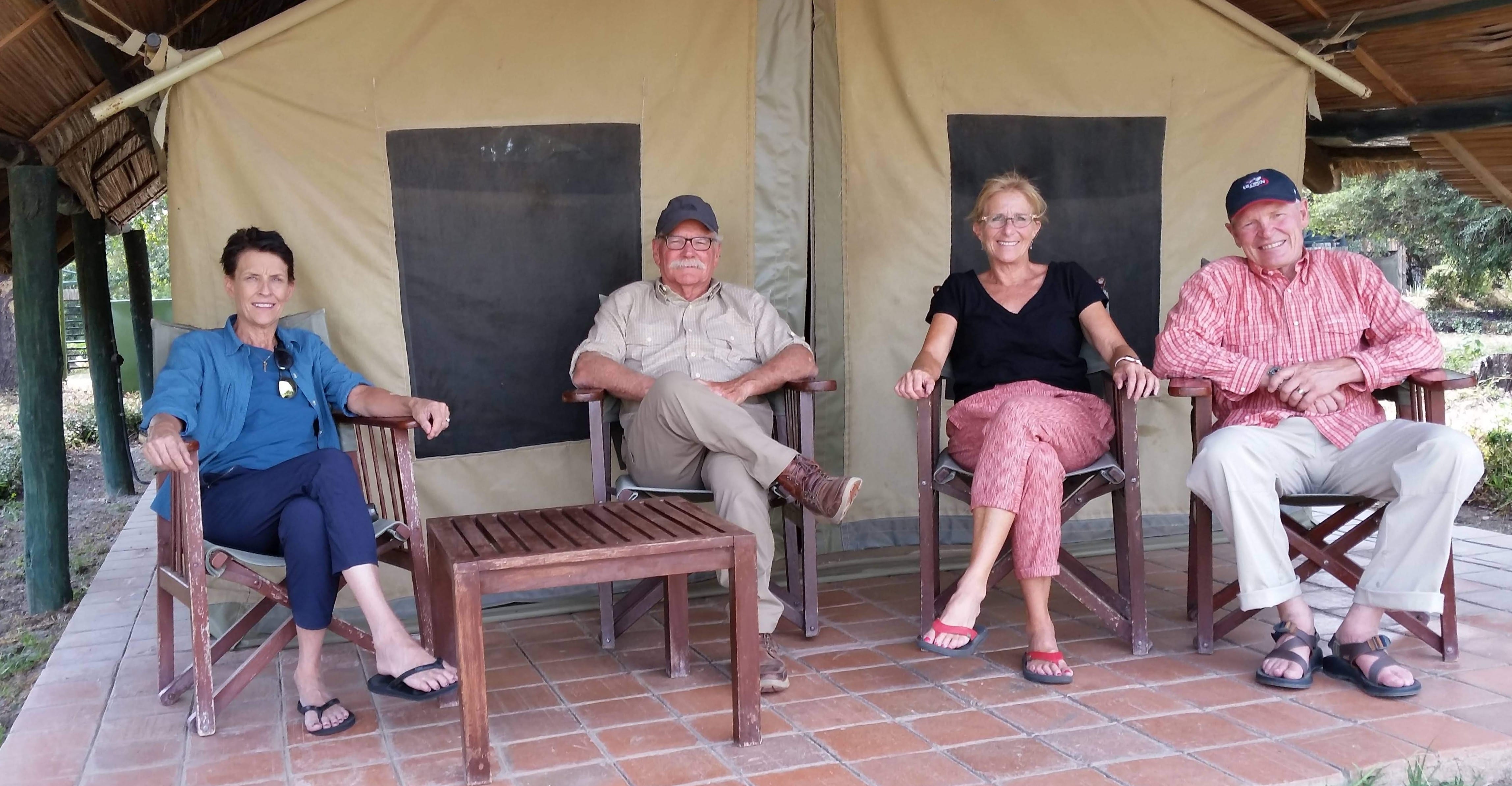
Neighbors Kathy, Tom, Margy and Bryce
While she busied herself at the sink, Michael invited himself onto our neighbors’ front porch to get better acquainted with Tom and Kathy, as well as their neighbors, Bryce and Margy (the second syllable is pronounced with a hard g, as in get). We had not met these two couples from Salt Lake City prior to this trip, but they have been vacationing together for years. Usually they travel in the same vehicle and sit together at meals, but they’re certainly not stand-offish. They welcomed Michael warmly into their circle, and later did the same for Nancy when she had finished hanging up her clean, wet clothes. We felt like we had died and gone to safari heaven: relaxing in the shade, dipping into a bag of peanut M&Ms that Kathy had brought from home, watching the animals at the waterhole freely come and go on the other side of the electric fence.
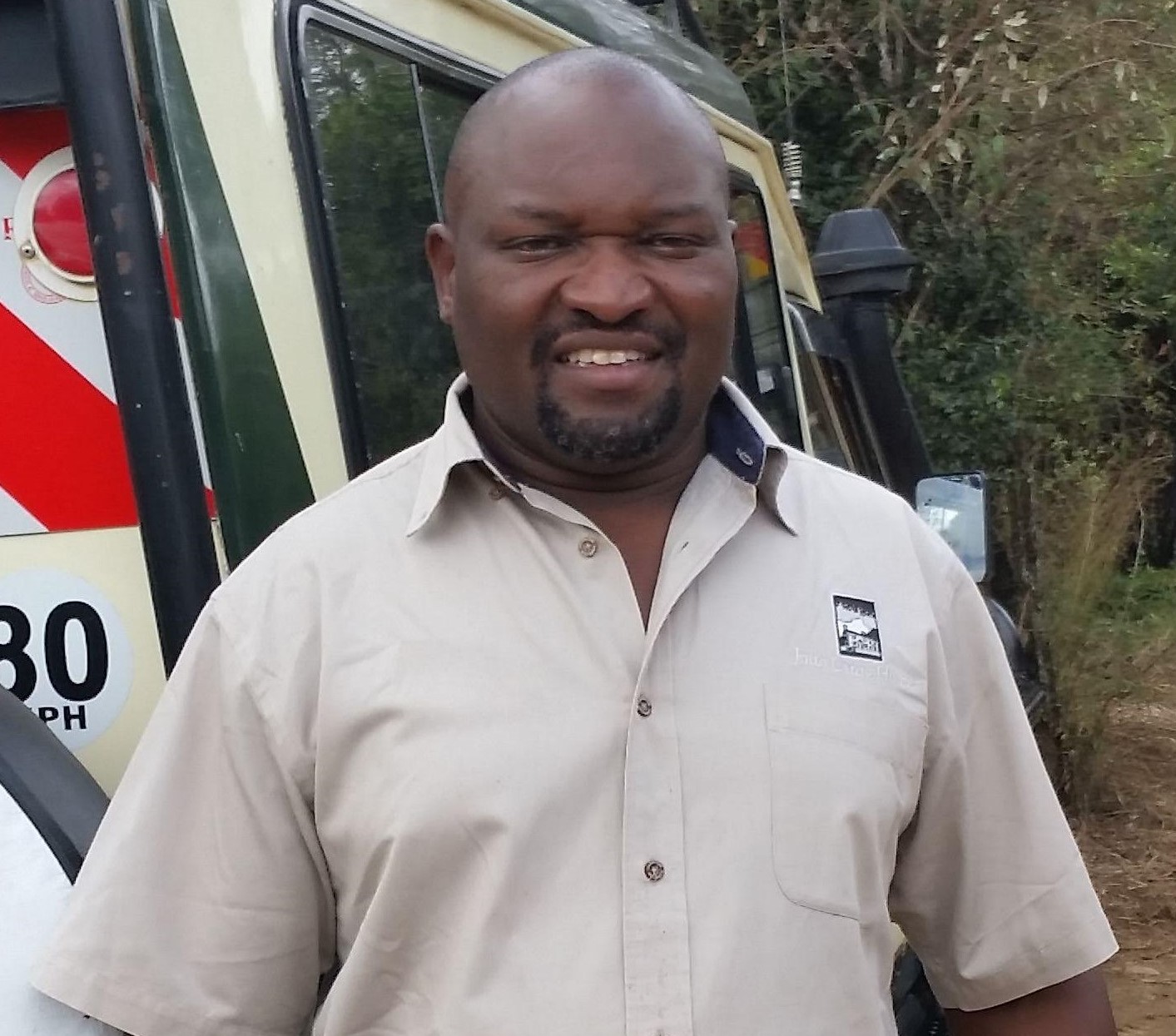
Steven
Our afternoon idyll came to an end when it was time to meet for the 4 pm game drive. We had not yet ridden in Steven’s vehicle, so we climbed in with him, Pam, and Eric. Steven’s main objective this afternoon was to show us some rhinos. The Ol Pejeta Conservancy serves as a sanctuary for these endangered animals, which are subject to poaching elsewhere on the continent because their horns are thought to have aphrodisiac qualities. (Rhino horns are not true horns, but conglomerations of stiff hairs.) Rangers have been placing microchips into rhino horns across Africa so they can track the animals and thus discourage poachers. If a microchipped individual stops moving, rangers will assume that it is in trouble and quickly respond, hopefully aprehending the poachers before they can do any more damage. The black rhinoceros is particularly in danger of extinction, with only a few thousand left in the wild.
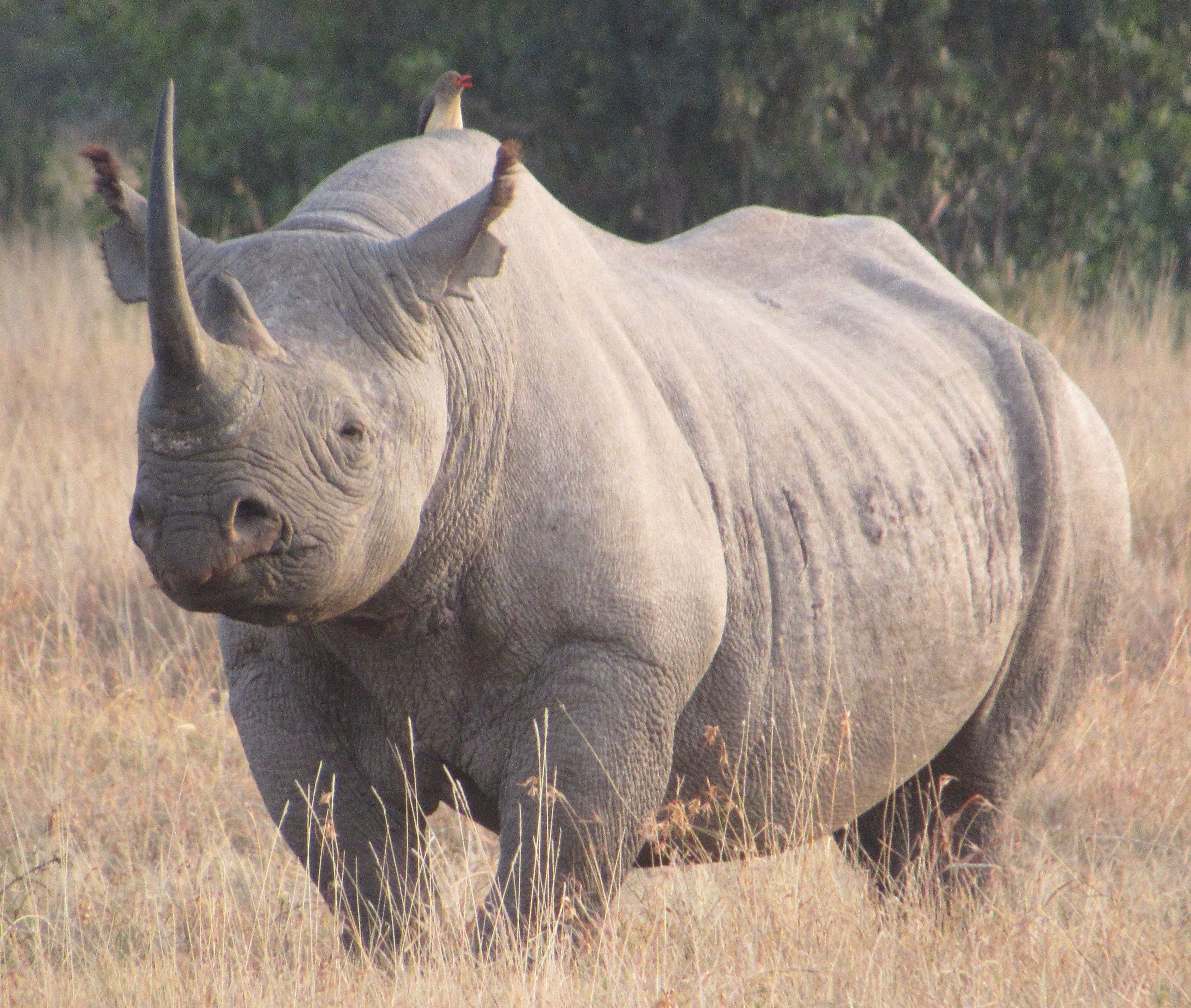
Rounded jaw of a black rhino

Square jaw of a white rhino
Steven explained that black rhinos are not really black, and white rhinos are not really white, but the two species are fairly easy to distinguish from one another because black rhinos have a concave back, a pointed chin, and travel alone, while whites have a humped back, a flat chin, and move in family groups. We saw several of both kinds this afternoon, including some cute babies whose horns have not yet developed.

Hartebeest
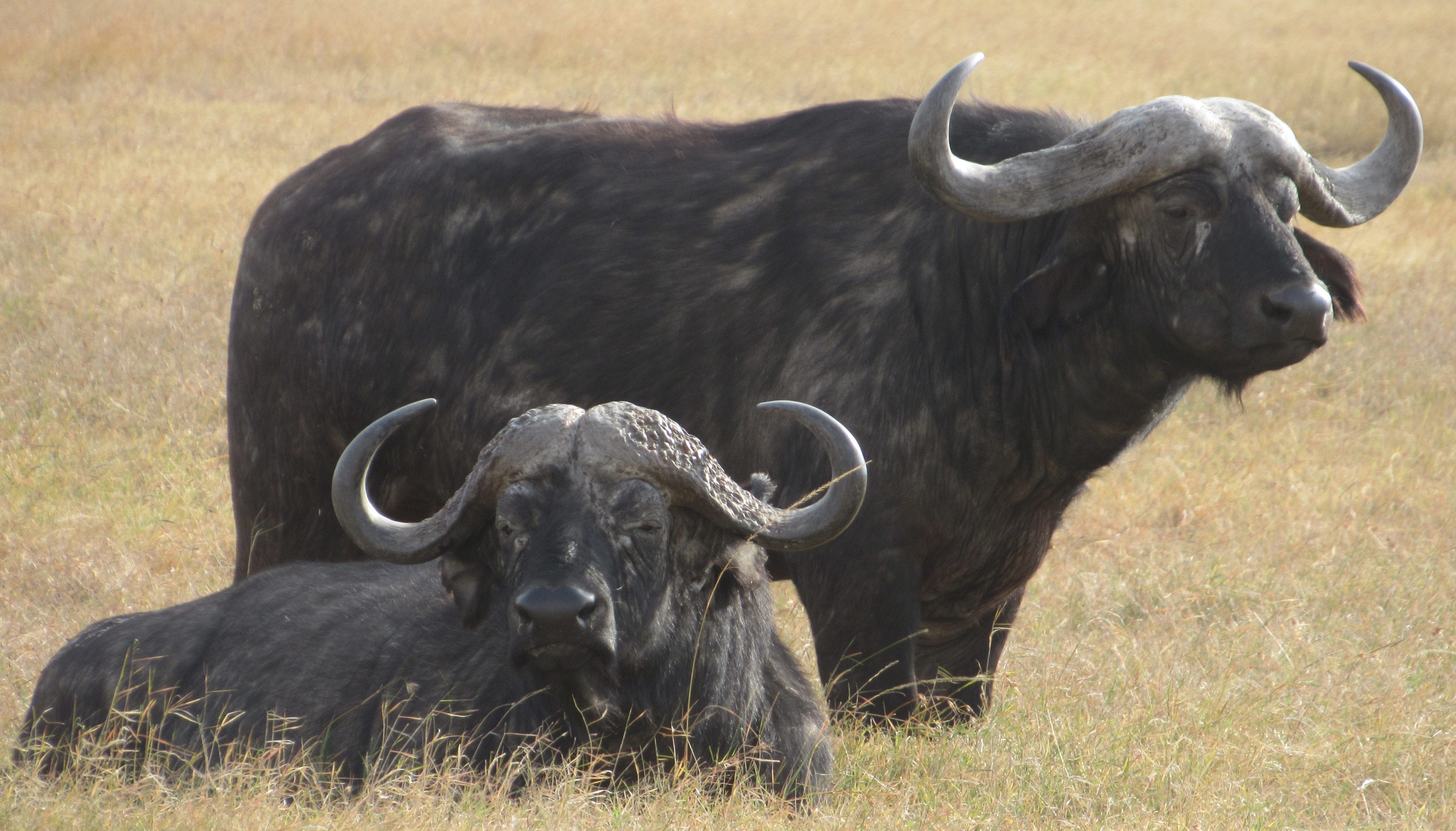
Cape buffalo

Warthog
We also saw several hartebeests, impalas, zebras, giraffes, and a lot of hulking cape buffalo. At one point Steven stopped so we could watch a black-winged kite he had spotted. The bird hovered in place like a helicopter for probably fifteen seconds before diving to catch something in the grass. Alas, the dive happened so quickly, Michael could not get a photo, but we did see the kite fly off with some kind of rodent in its beak.
As we began the drive this afternoon, Michael had let Steven know that he was on a quest to photograph a warthog. We had seen several of them already both here and in Samburu, but the homely little creatures always turned and trotted in the other direction whenever we approached. Steven promised to do what he could to help. Pam and Eric found Michael’s request highly amusing and teased him about his attraction to warthogs through the entire drive (and knowing Pam and Eric, the teasing is likely to continue throughout all eternity). Michael admits that he’s always had a fondness for Pumbaa, the carefree warthog in The Lion King. We learned that pumbaa is the Swahili word for “foolish,” and warthogs are known to have such terrible memories that they will run right back into the path of a predator they had escaped only moments earlier. (Several of our guides bore personal witness to this unfortunate behavior.) On the other hand, warthogs have developed a smart strategy for protecting themselves while they sleep.
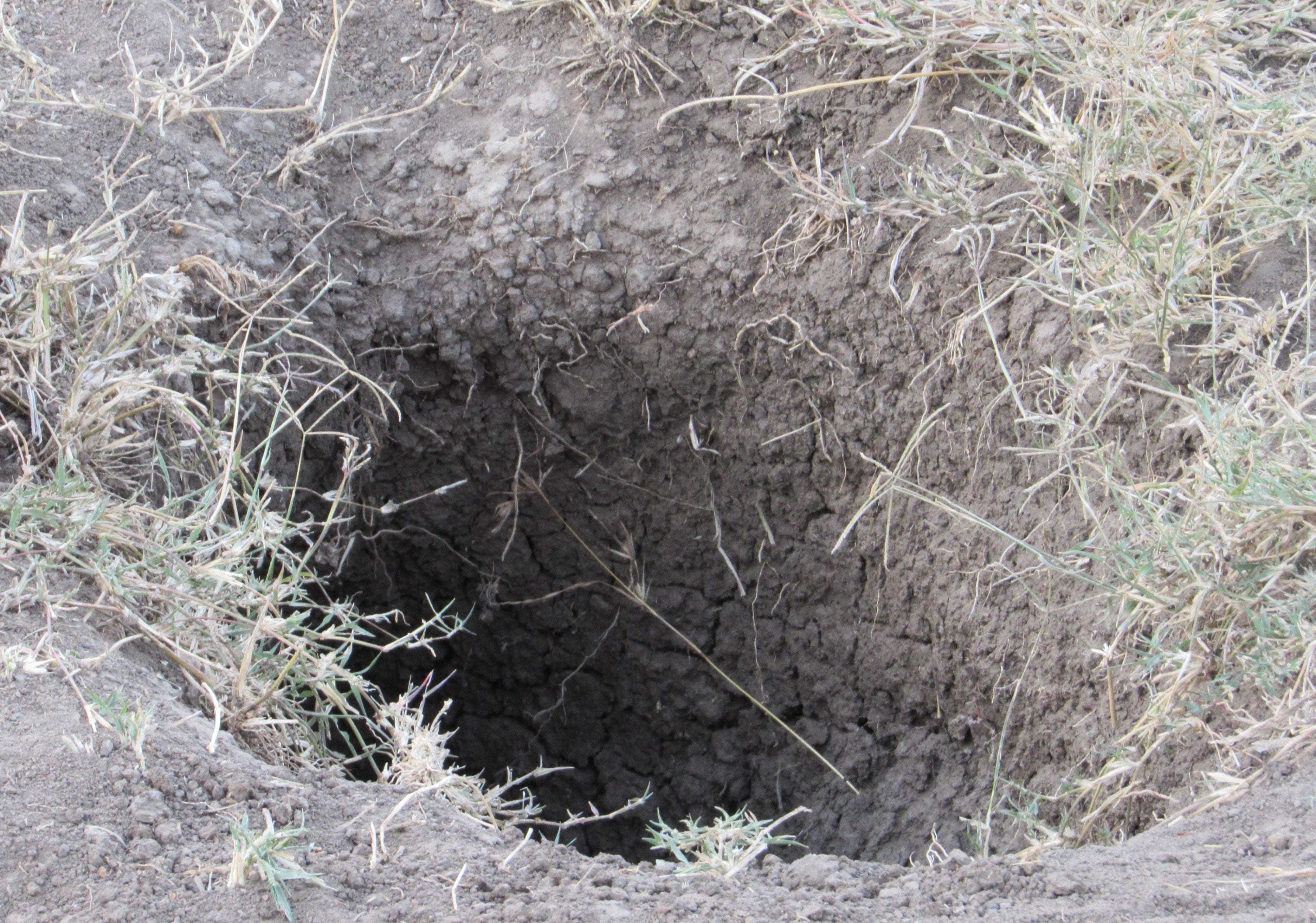
Abandoned aardvark hole appropriated by warthogs
When it gets dark, the hogs find one of the short, wide tunnels dug by aardvarks rooting for termites, and then back into it. When morning comes, or if anyone tries to disturb it, the warthog can come charging out tusks first. (We were disappointed to learn that although the Ol Pejeta Conservancy is home to many aardvarks, we were unlikely to see any because they are nocturnal. Steven assured us that there is a healthy population here, citing as evidence the absence of big termite mounds such as the ones that dotted the Samburu Reserve.)
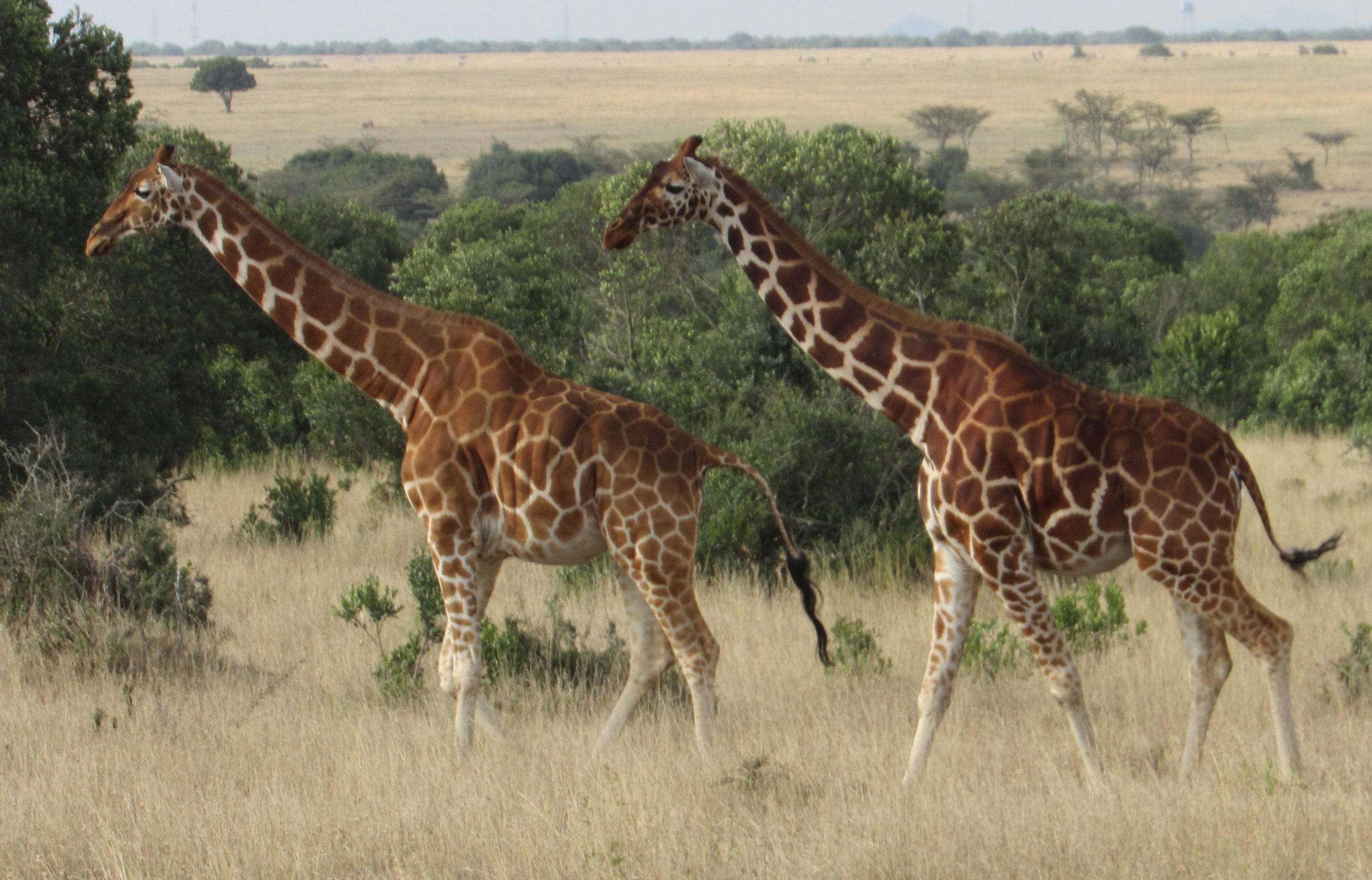
Reticulated giraffes
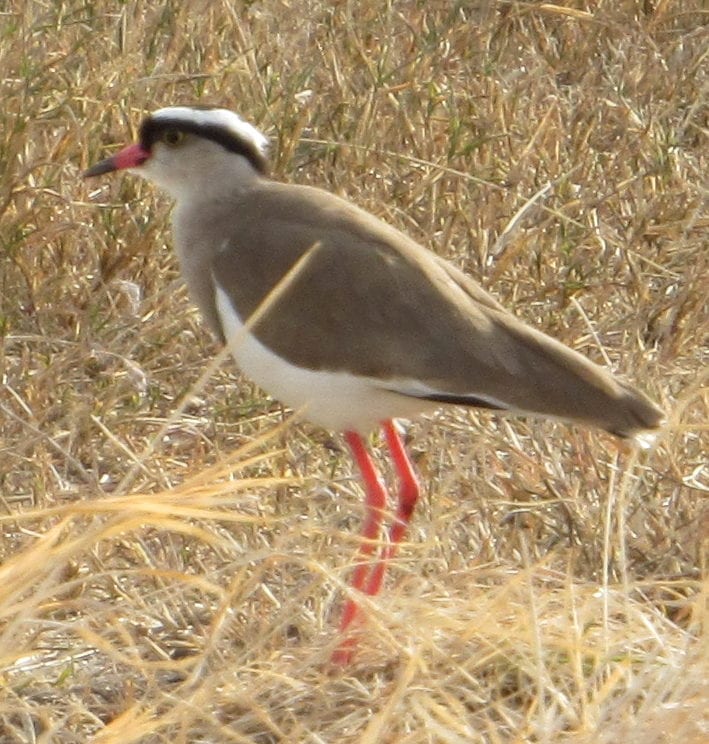
Crowned plover
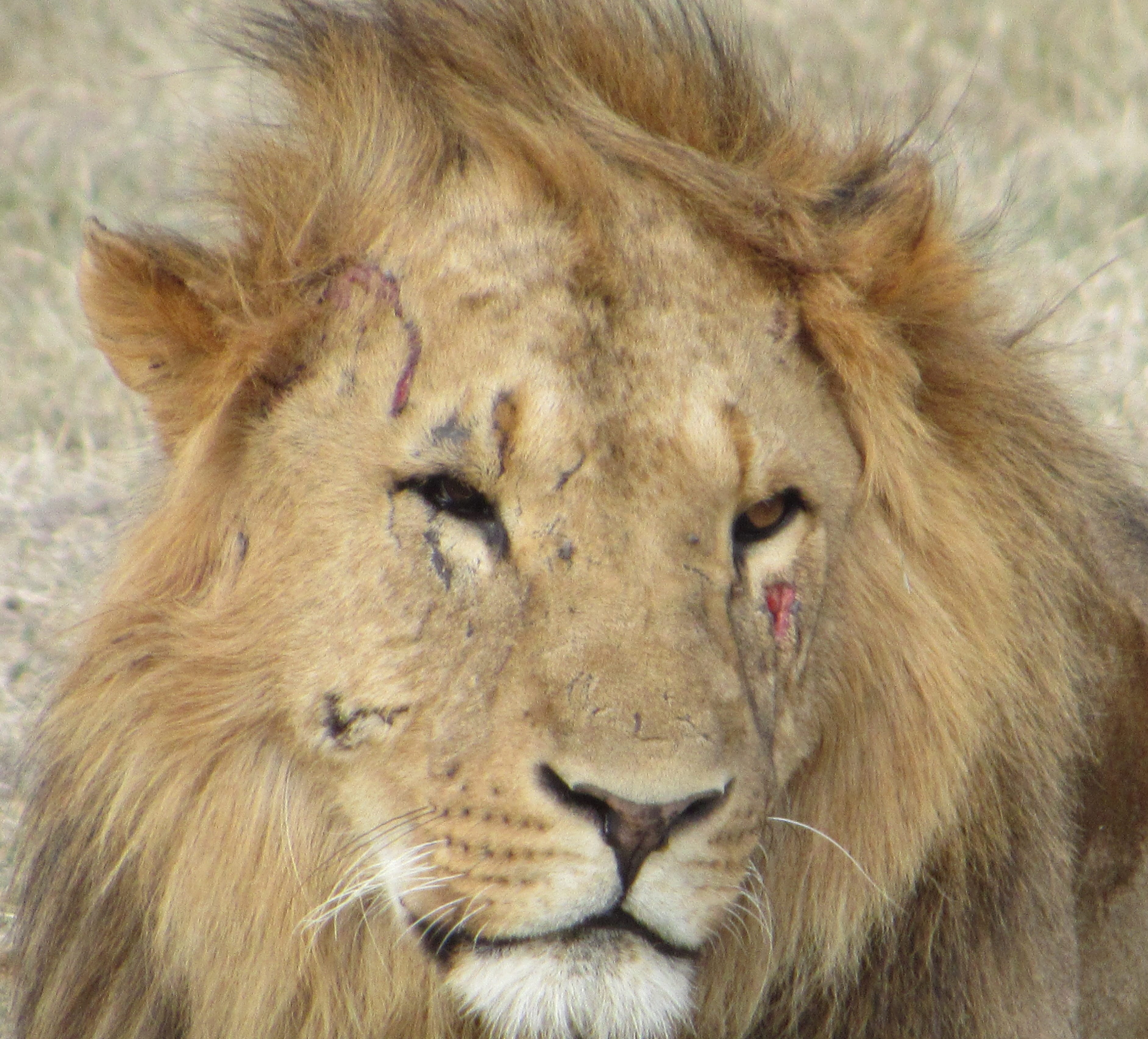
Male lion
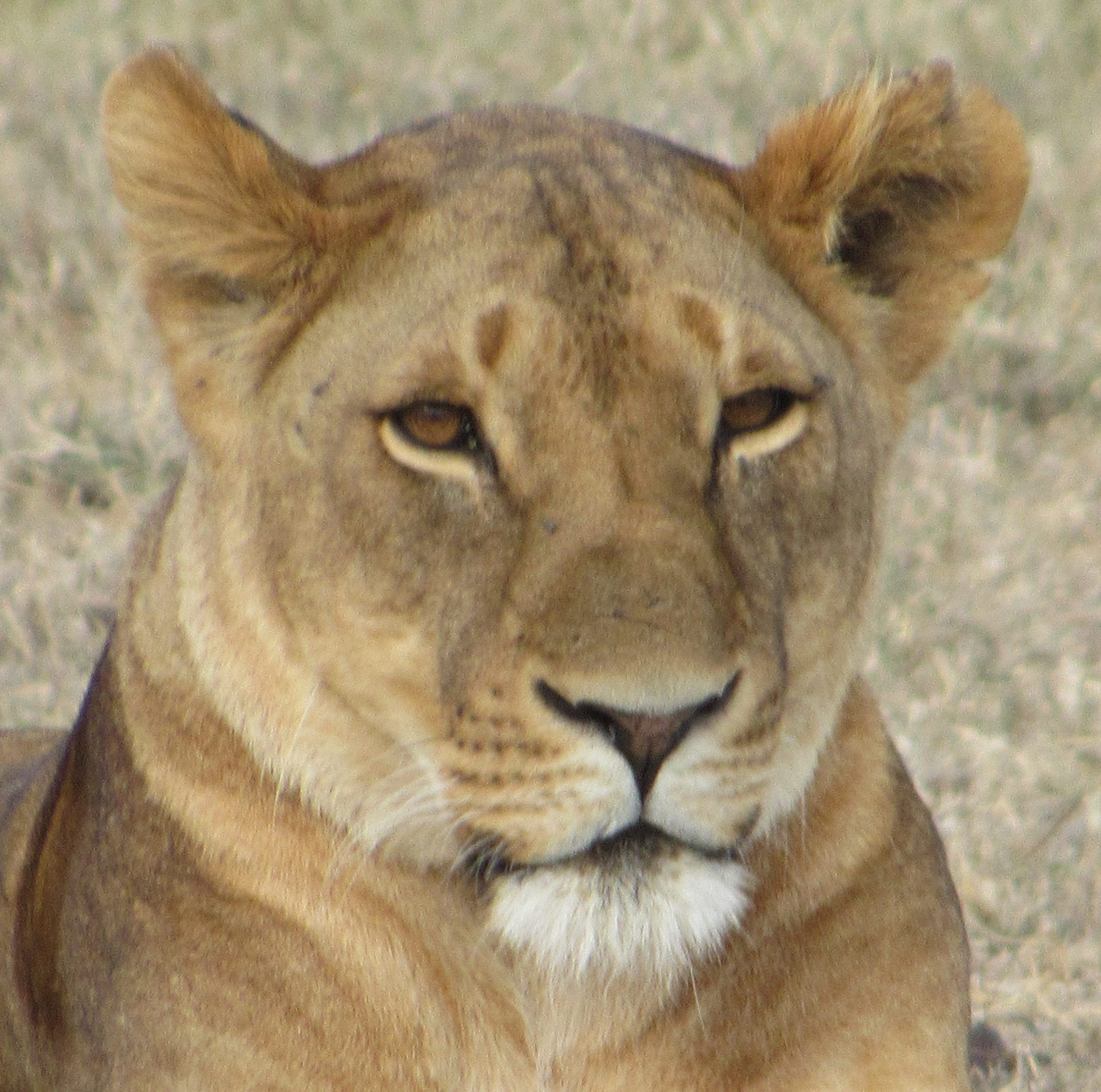
Female lion
Michael finally captured a good portrait of a warthog–as well as one of those aardvark holes–after we joined a group of vehicles gathered around a pair of lions lying in an open area about the size of a soccer field, surrounded by shrubbery. Jim had told us that the males here in Ol Pejeta would likely have fuller manes than those we had seen in Samburu, and that was true. The male in this pair looked like someone you wouldn’t want to mess with. The battle scars on his cheek and around his eyes made his gaze even more formidable, but the female didn’t seem at all cowed. (We wouldn’t want to mess with her, either!) After watching them do absolutely nothing for about twenty minutes, Nancy wondered aloud why we didn’t just move on.
“Keep watching,” Steven replied. “This is a mating pair.”
Sure enough, within a few more minutes, the male suddenly got up and mounted the female, who uttered a low growl. The pairing lasted less than a minute, and then both went back to their previous positions. Apparently, lions have no interest in either foreplay or afterglow; mating is more a duty than a pleasure. Steven told us that lions will copulate over a hundred times during a trysting session, every ten to fifteen minutes for three or four days. When the male is finished with one female, he can start again with another in estrus within his pride. Lions can breed at any time of year, and gestation takes 105-110 days.
Having seen plenty, we returned to the camp and had a chance to take a twilight walk (within the electric fence) before dinner–which was great! We had been told that the food at Sweetwaters was among the best of all the safari lodges in Kenya, and we were not disappointed. Night had fallen by the time we finished dinner, but in the moonlight we could dimly see a lot of animate forms gathered at the watering hole before going to bed–or whatever animals do at night.
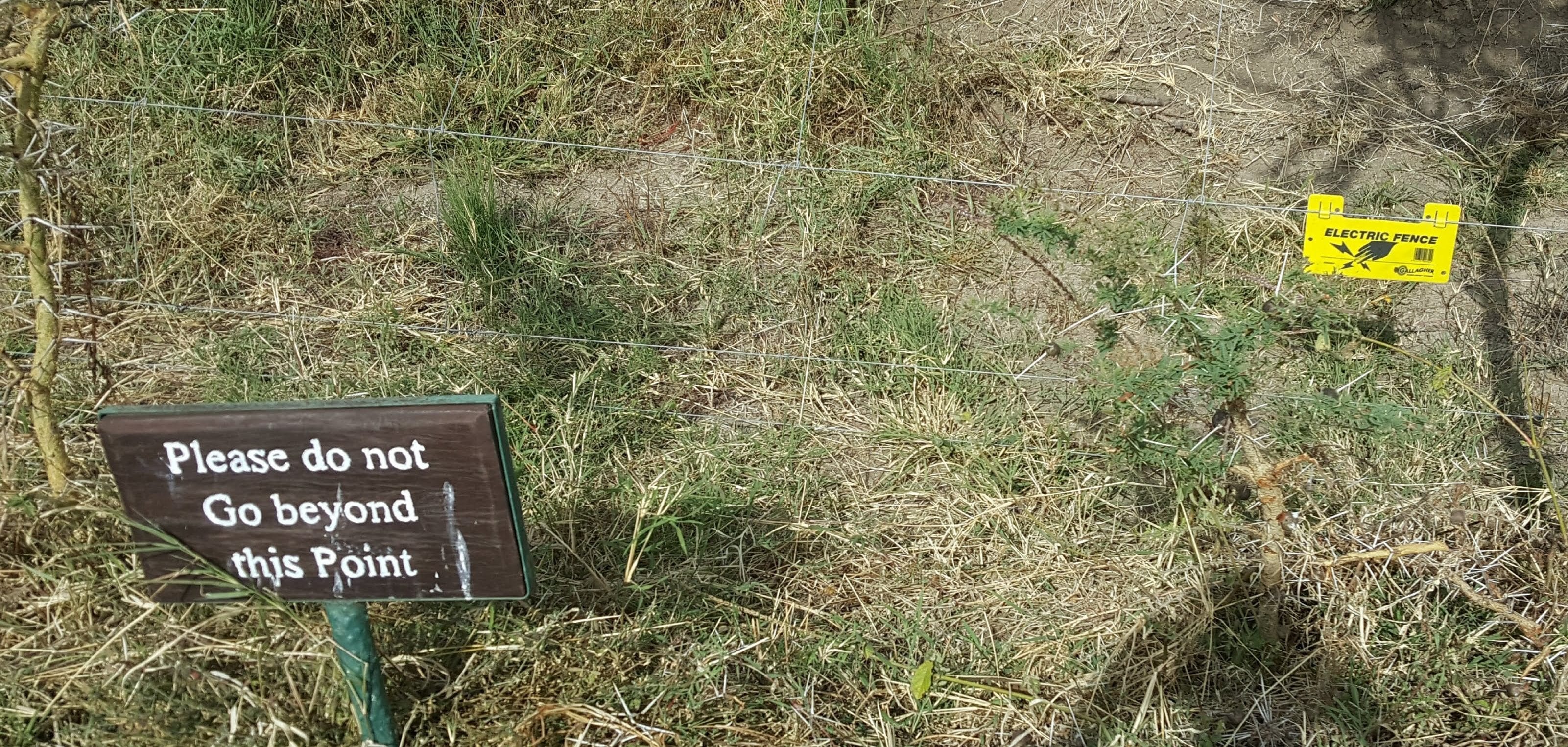
Electric fence
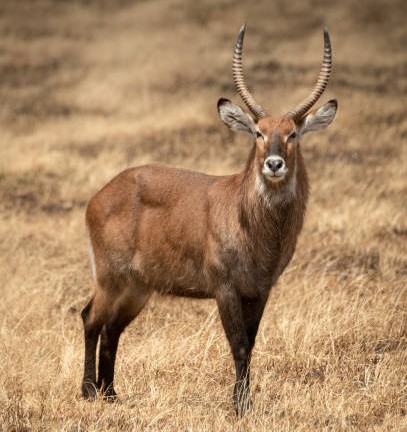
Defassa waterbuck
Mike and Vicki (another couple we had not met before this trip) had a pair of night binoculars, which they shared so we could see exactly what animals were at the hole. We didn’t need binoculars to watch a very determined Defassa waterbyuck try and try to get past the electric fence in the ditch between us and the pond. He’d make a run down the ditch, hit the fence and turn back; then he’d go a few meters farther, run down the ditch, hit the fence and turn back again. We watched him make six or seven attempts before he finally gave up and ran off into the dark.

Hot-water flasks kept our bed warm all night
Because we are now at a much higher elevation than we were in Samburu, the temperature fell significantly when the sun went down. Well, it fell only to 55°F, but Nancy was glad she had brought a couple of pairs of thermal underwear as well as a fleece jacket. We also were grateful for the fleece-covered hot water flasks that staff members placed under our duvet and blankets while we were at dinner.
During the night, both of us were startled awake by some loud exchanges between three pairs of nonhumans. Whether bird or animal we couldn’t tell, but we suspect bird. At first we thought they must be signalling that dawn had come, but it was only 3:30 a.m. and definitely still dark. The first caller would make a low, sustained grinding noise that sounded like one of those screw-type metallic noisemakers we used to use on New Year’s Eve. Its partner would then respond with a high-pitched scream that sounded like a New Year’s blowout whistle. The first pair, which seemed to be right outside our tent, would go back and forth for a few minutes, then another pair farther to the west would have a similar exchange. When they were done, a third pair off to the east would take a turn–and then the whole process would begin again. As we listened more closely, we began to notice slight variations in the pitch and duration of the sound each creature was making. Clearly, they had something important to tell each other. Eventually, either they decided that they had said enough, or both of us managed to go back to sleep despite the noise. We never determined which.
Leave A Comment